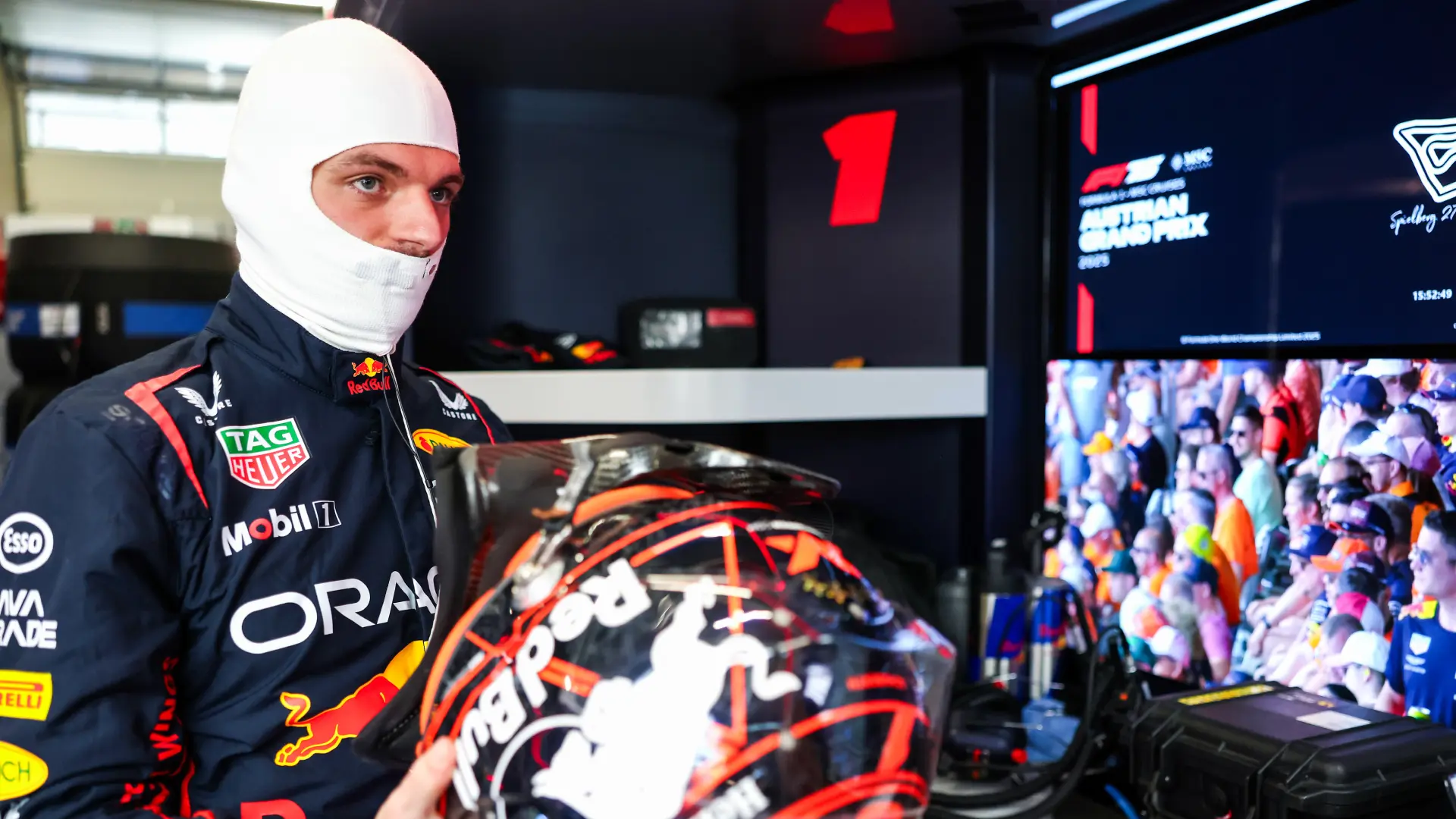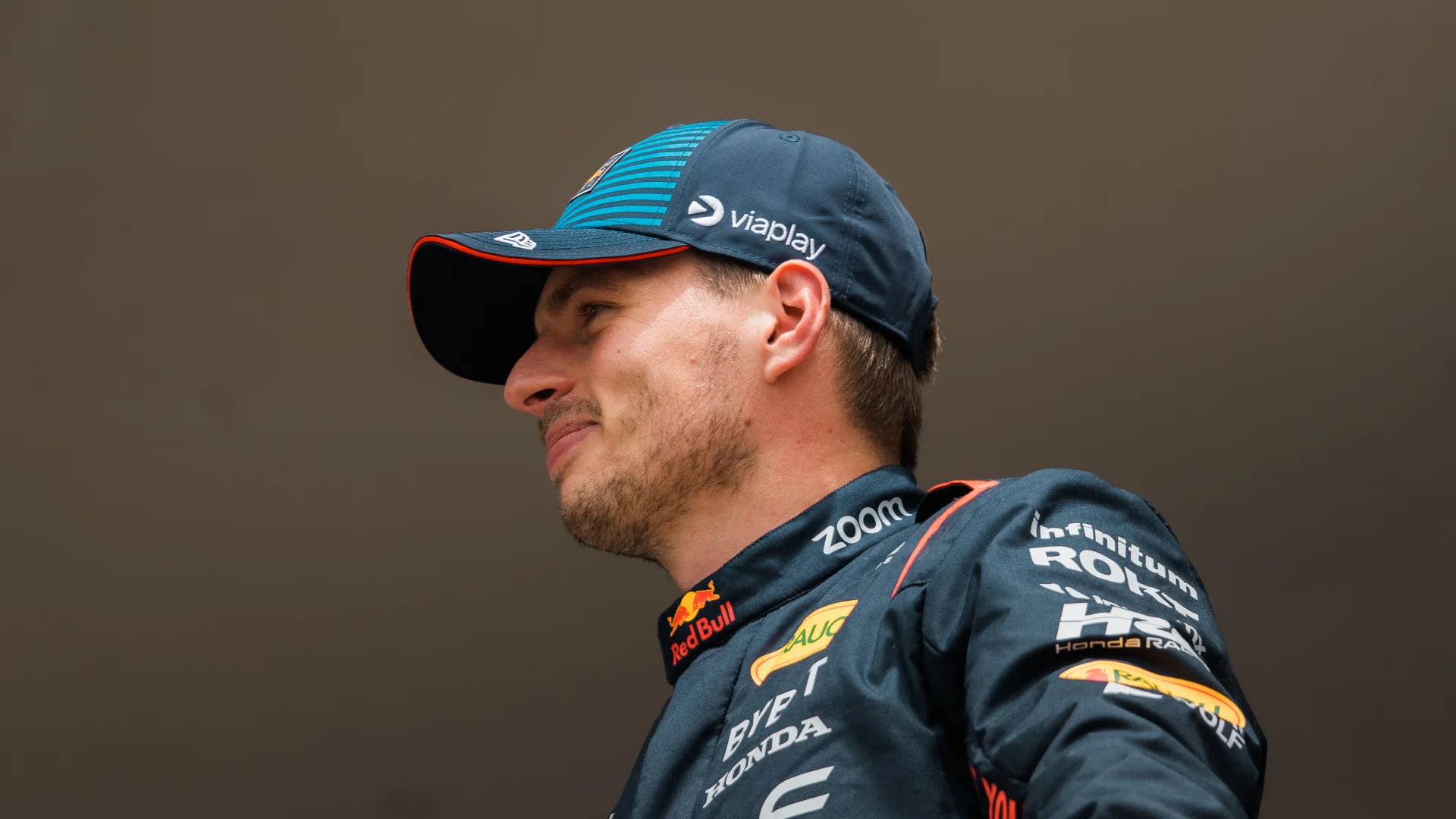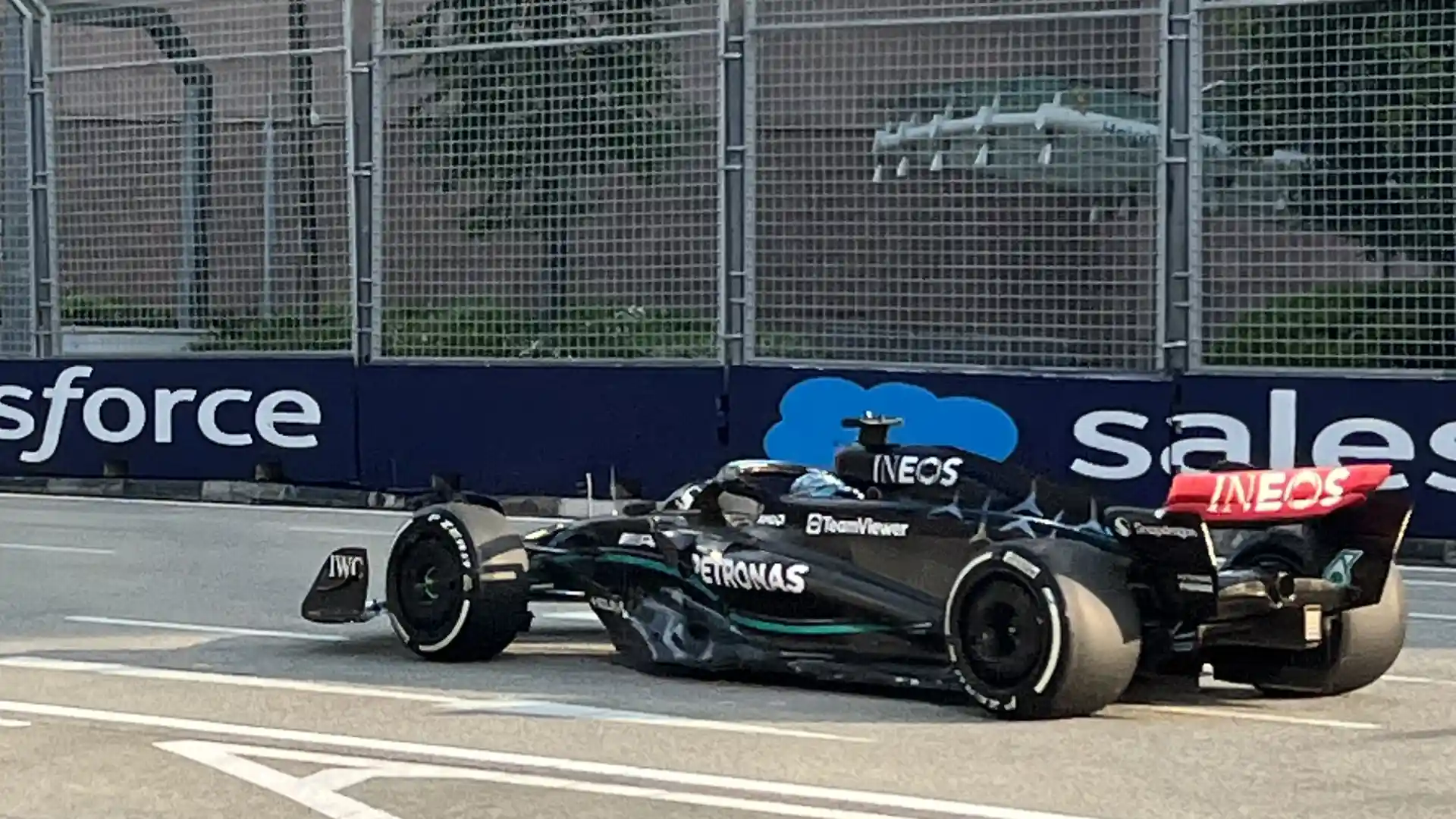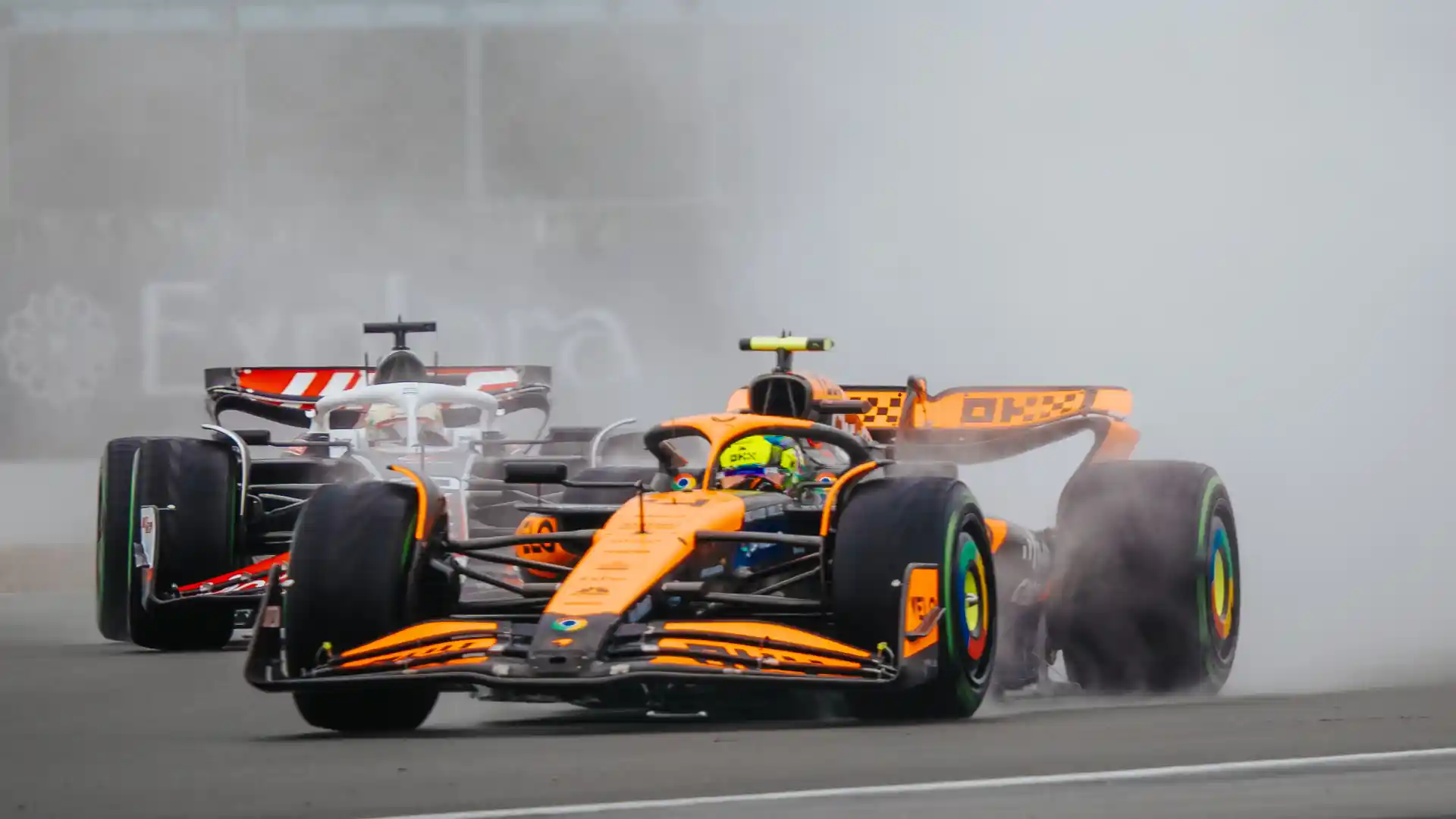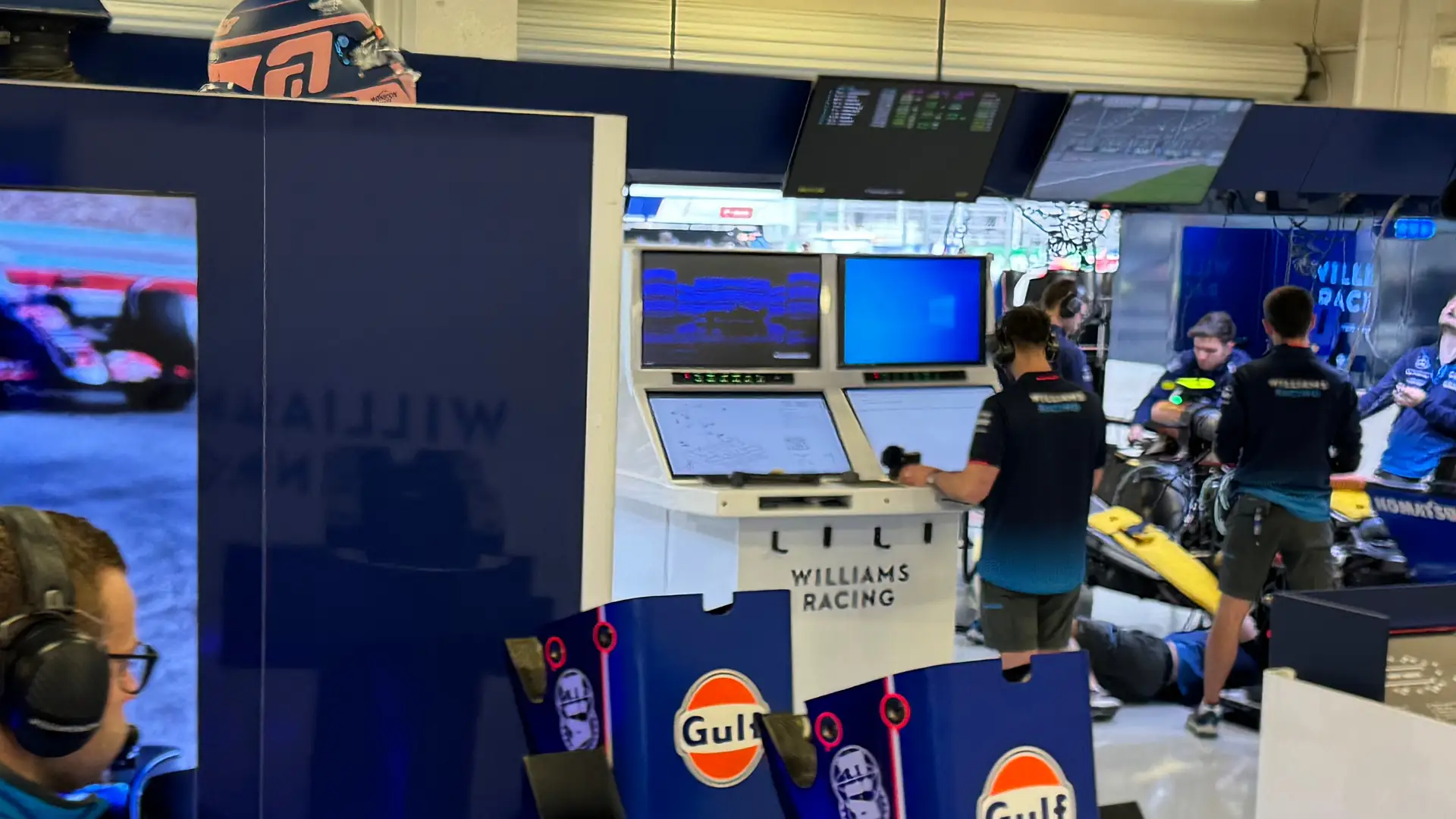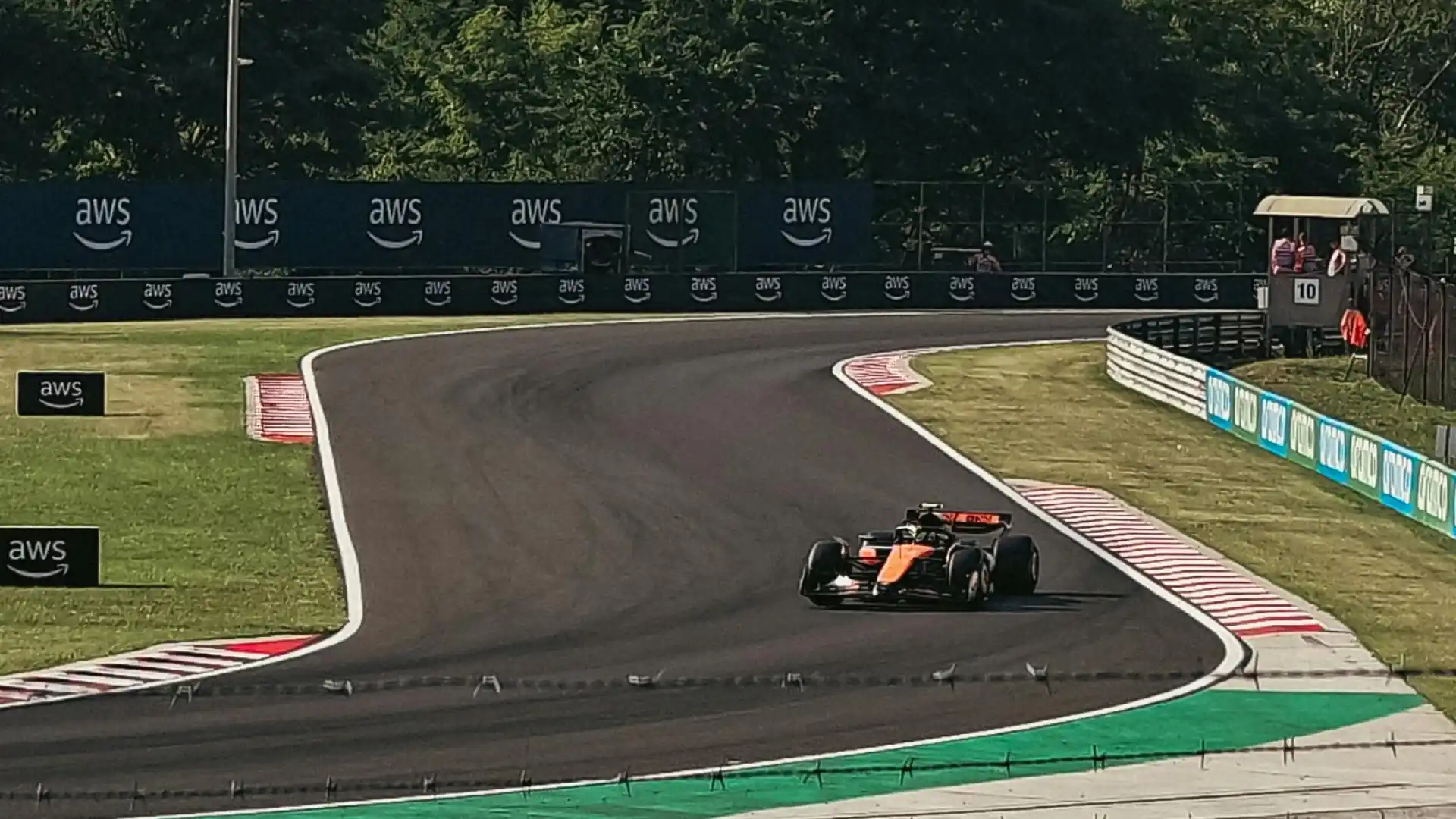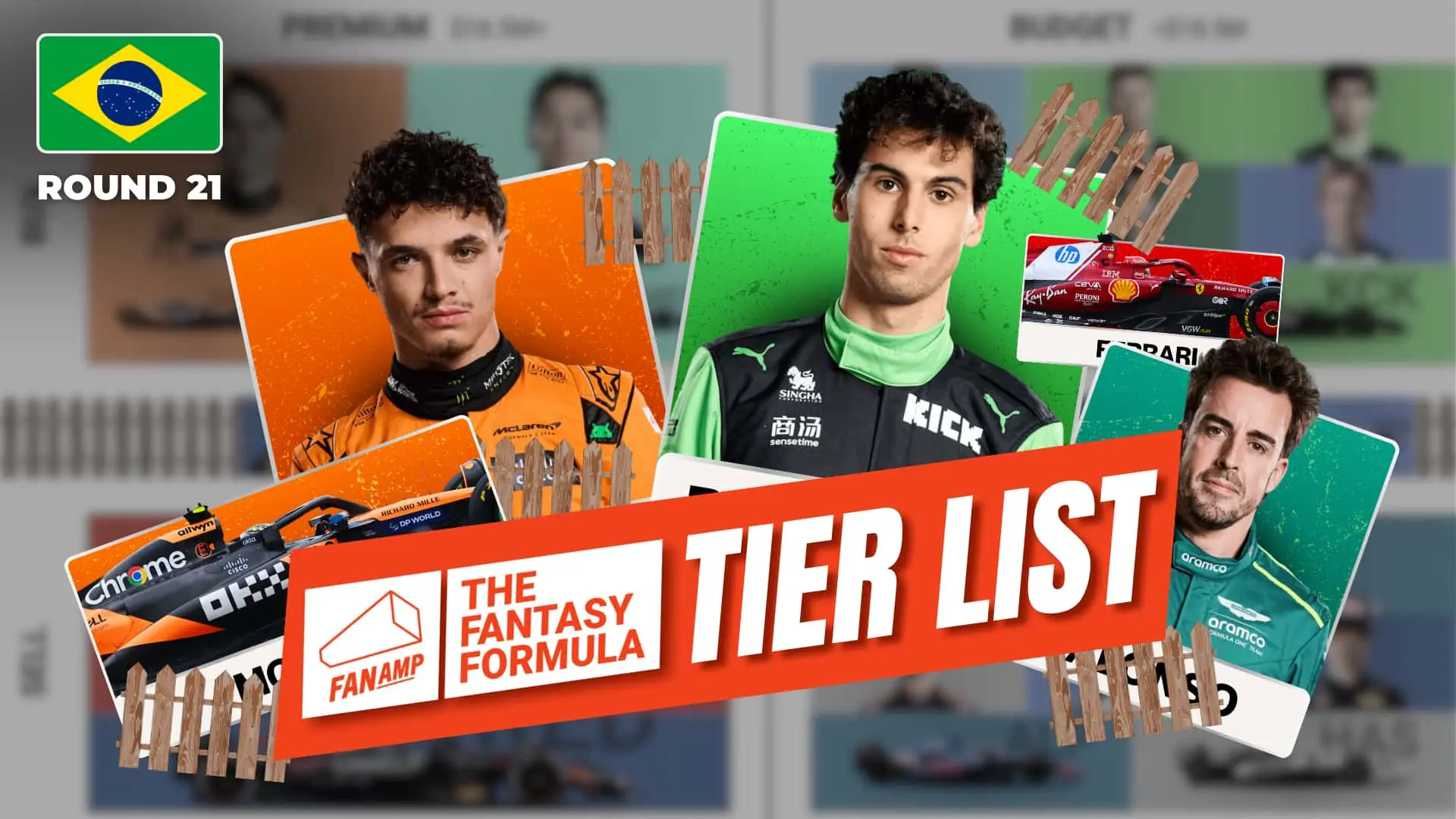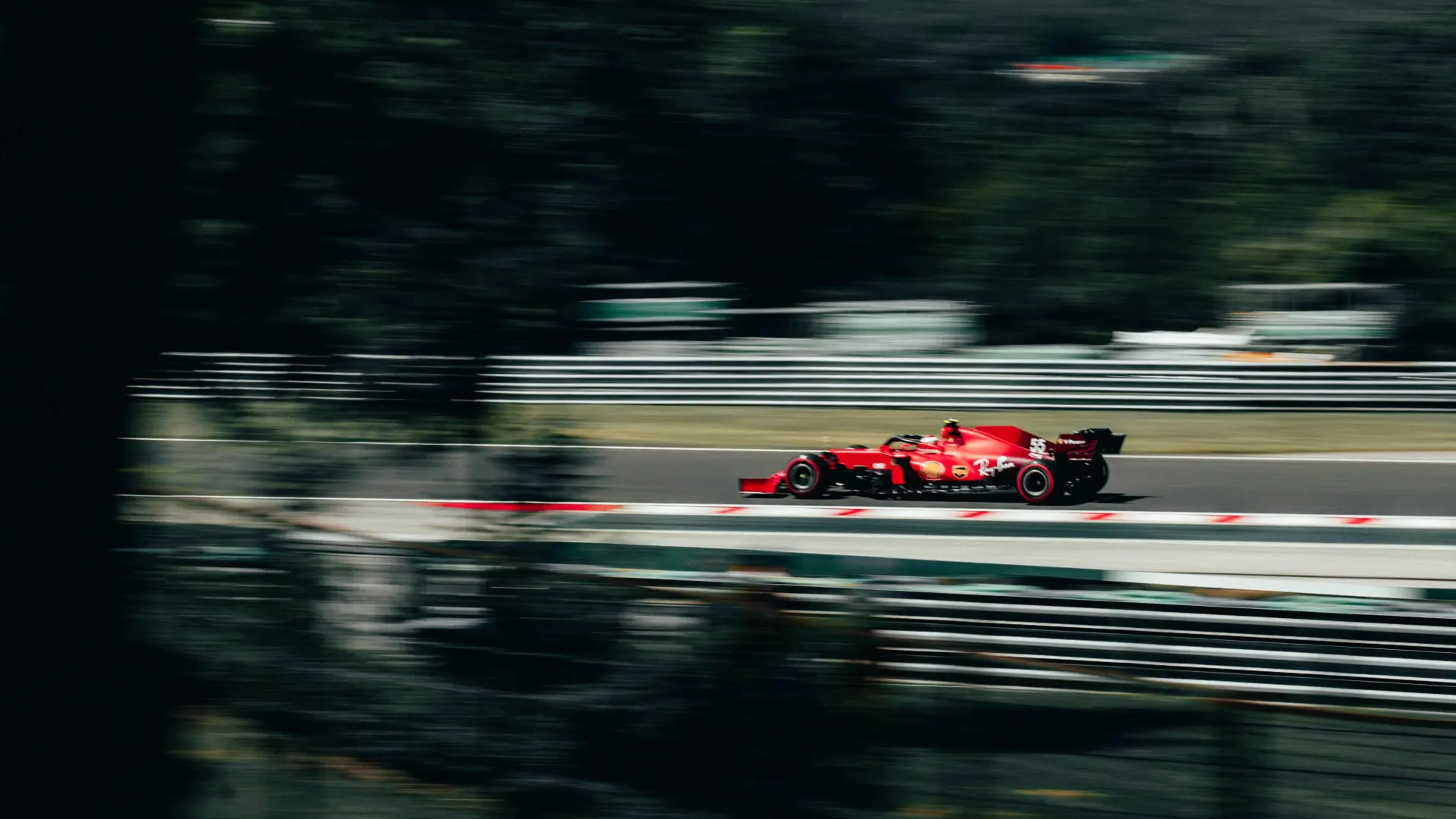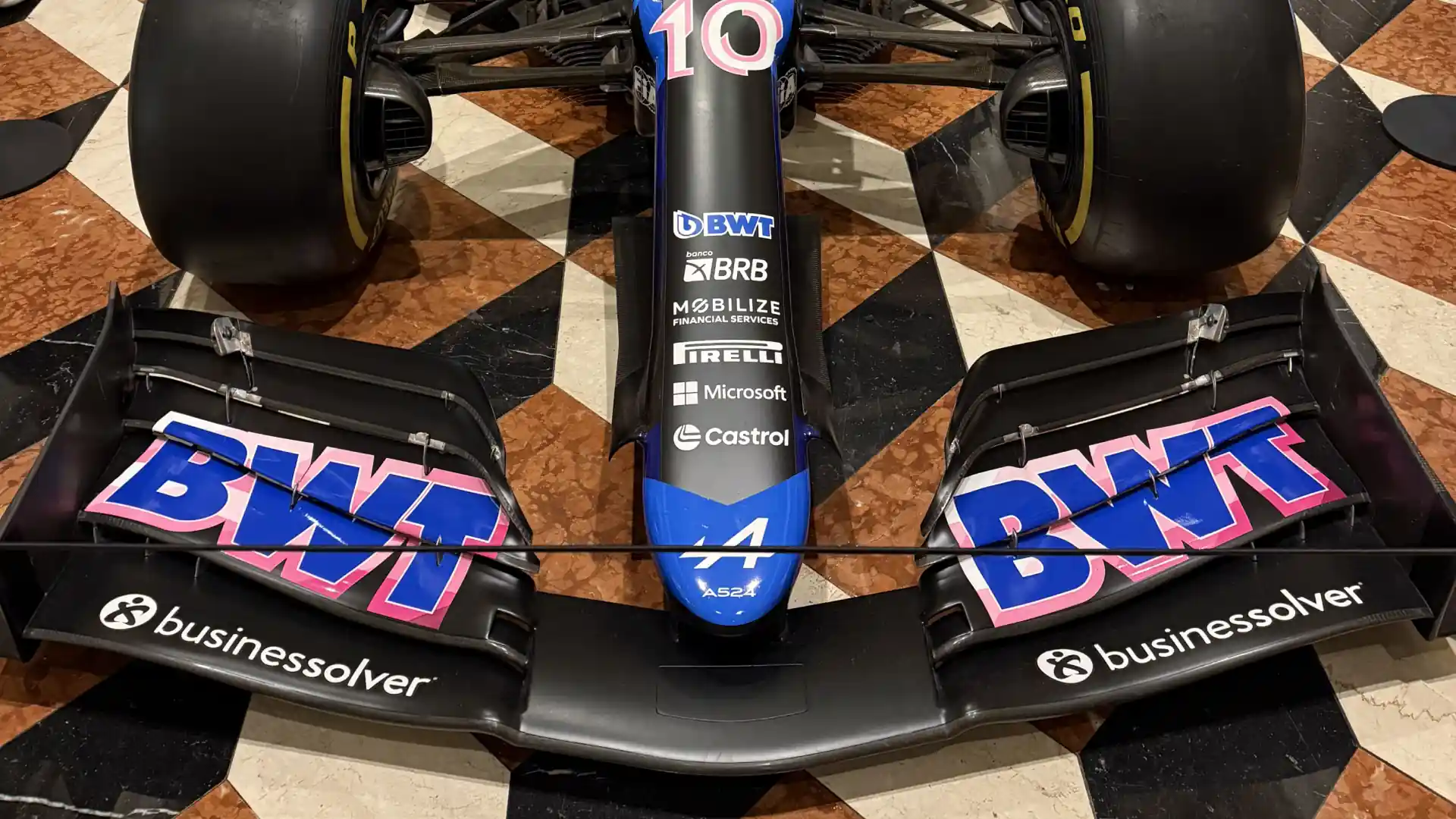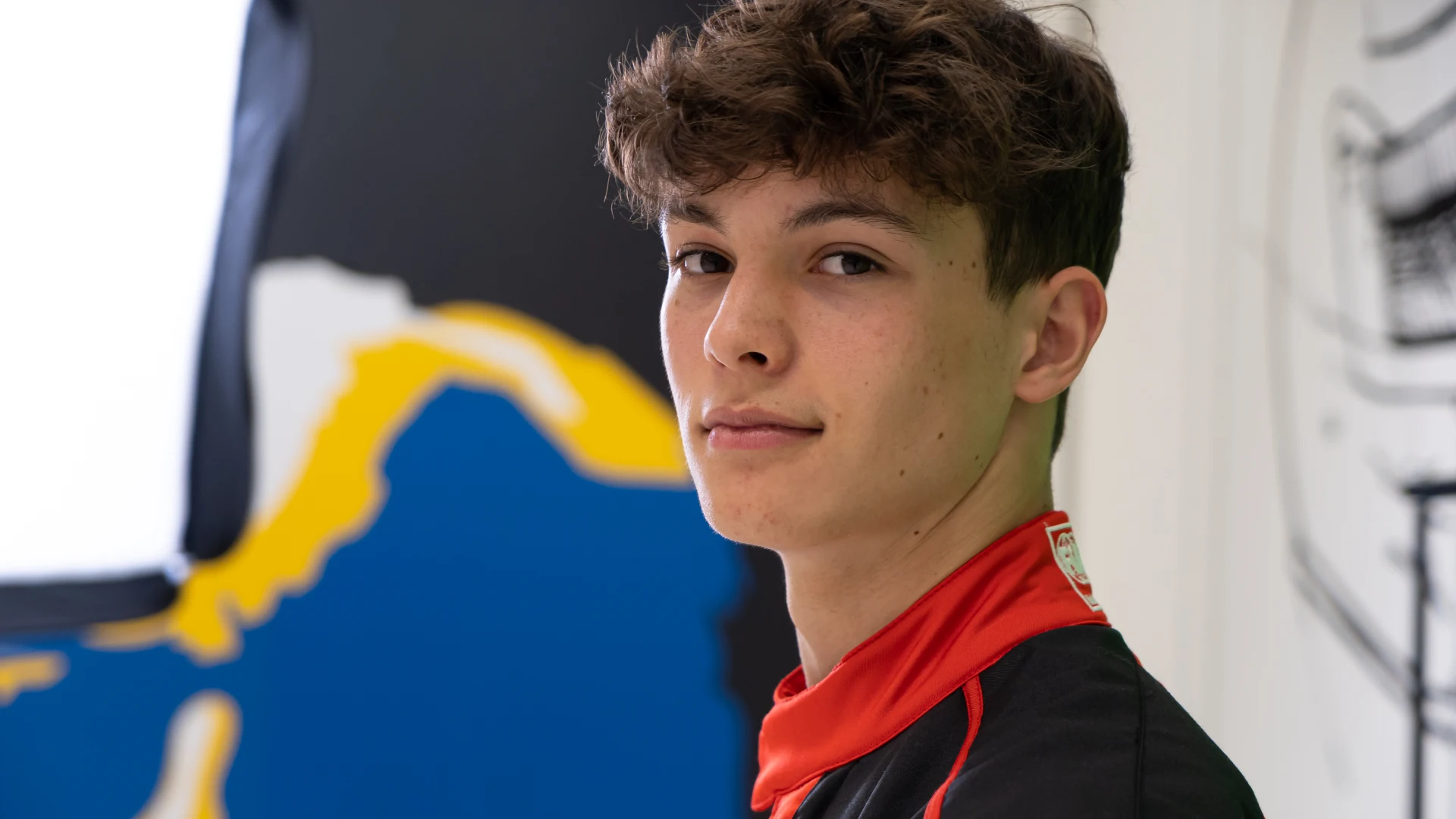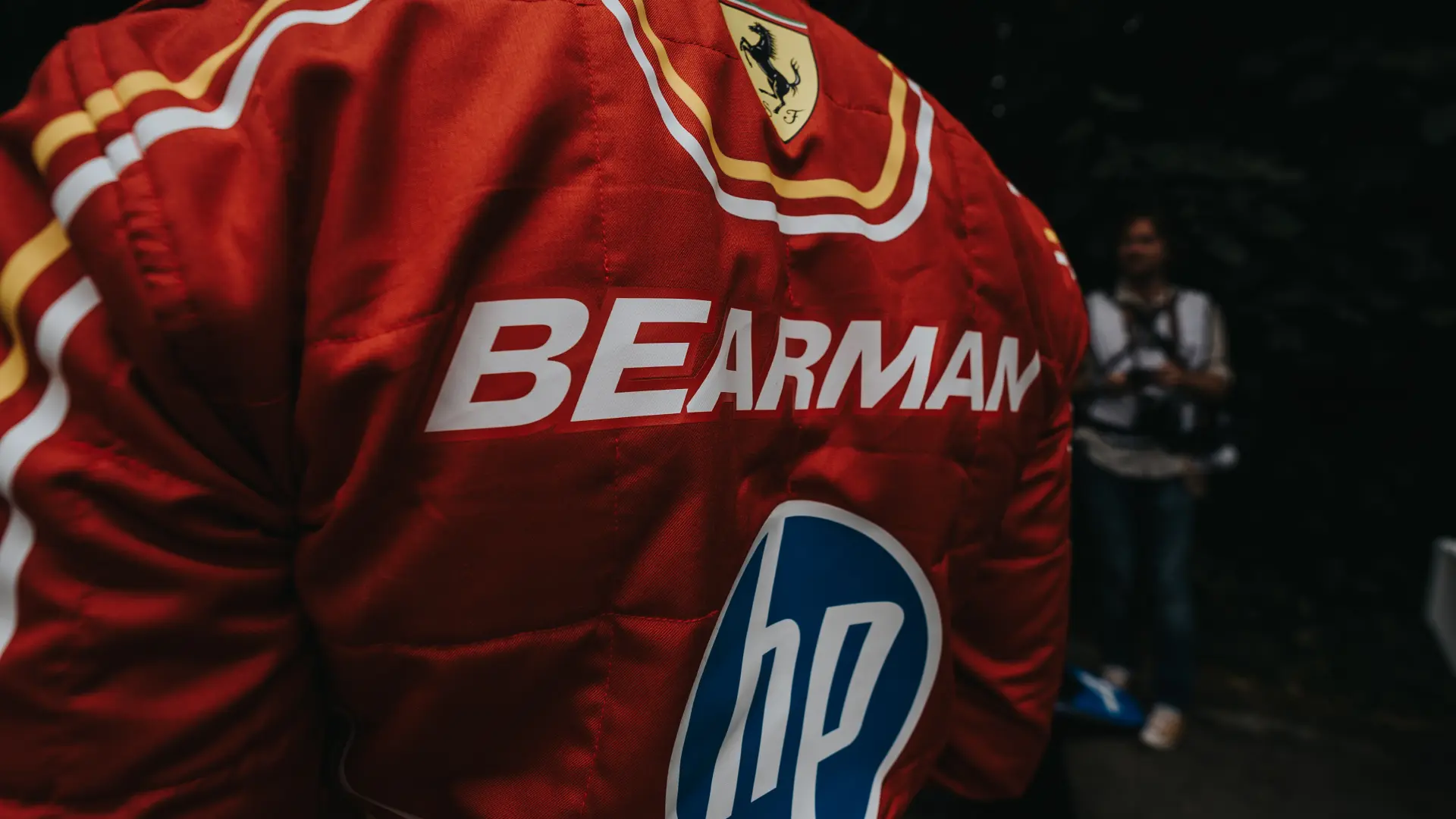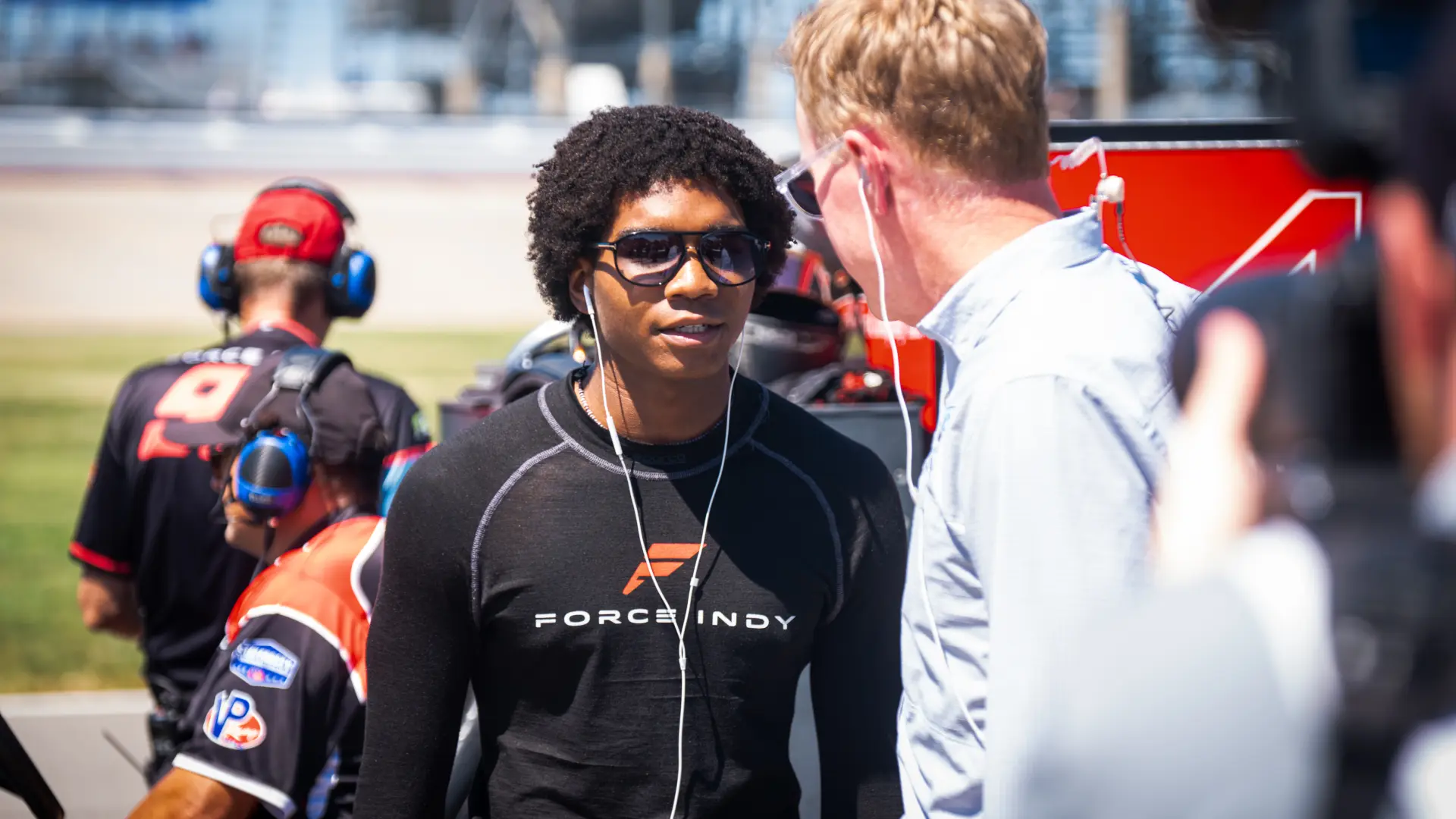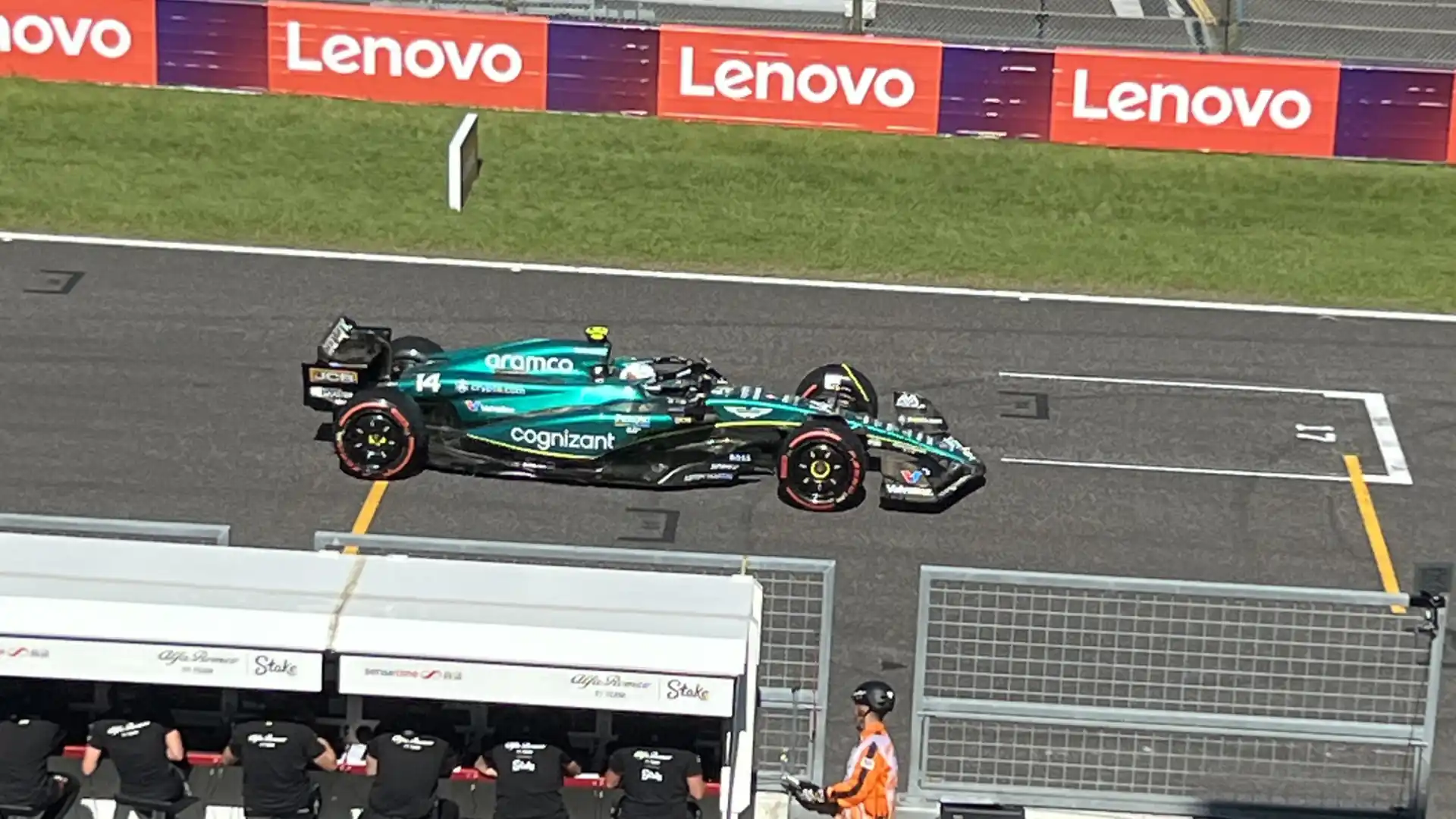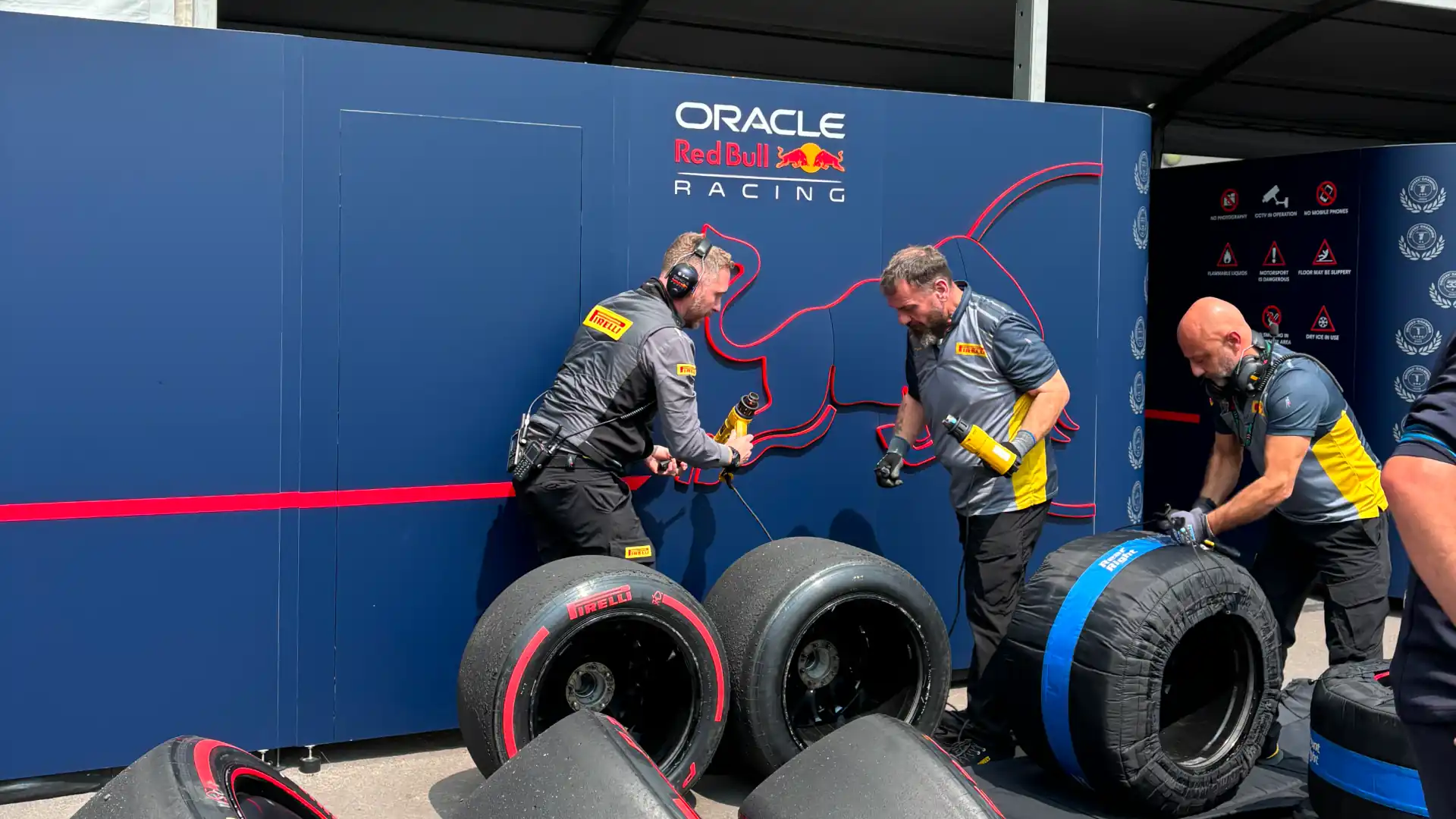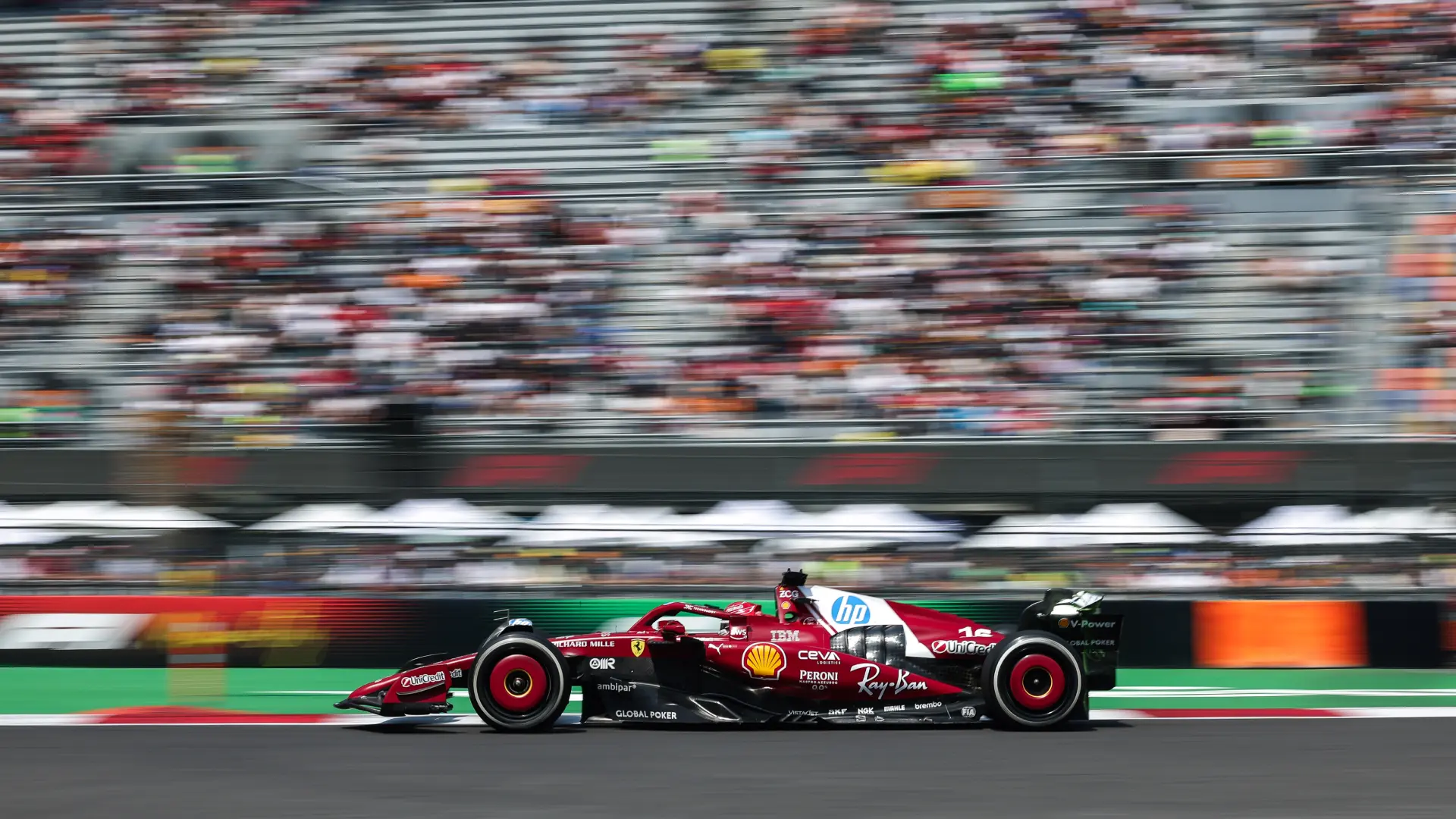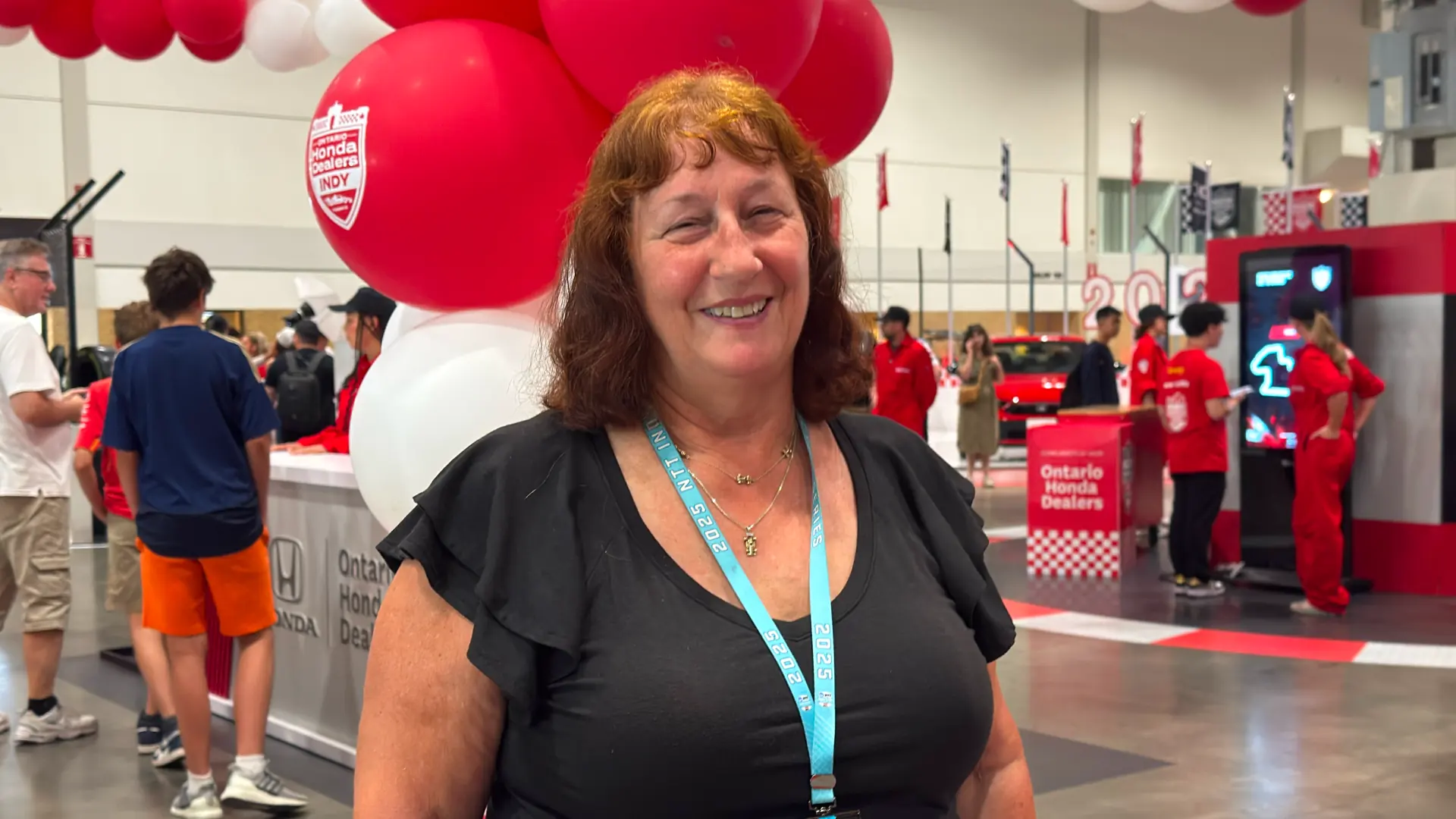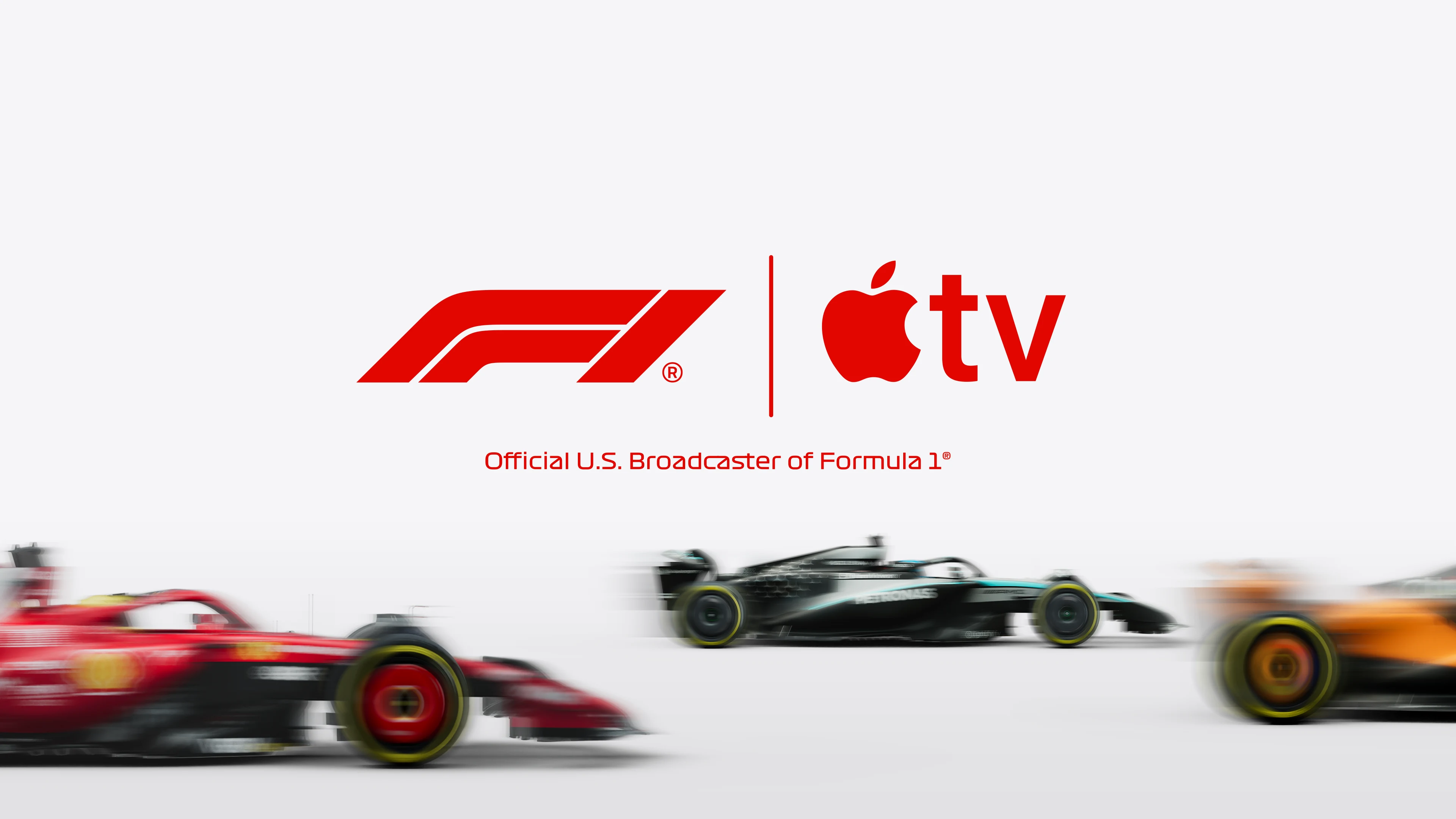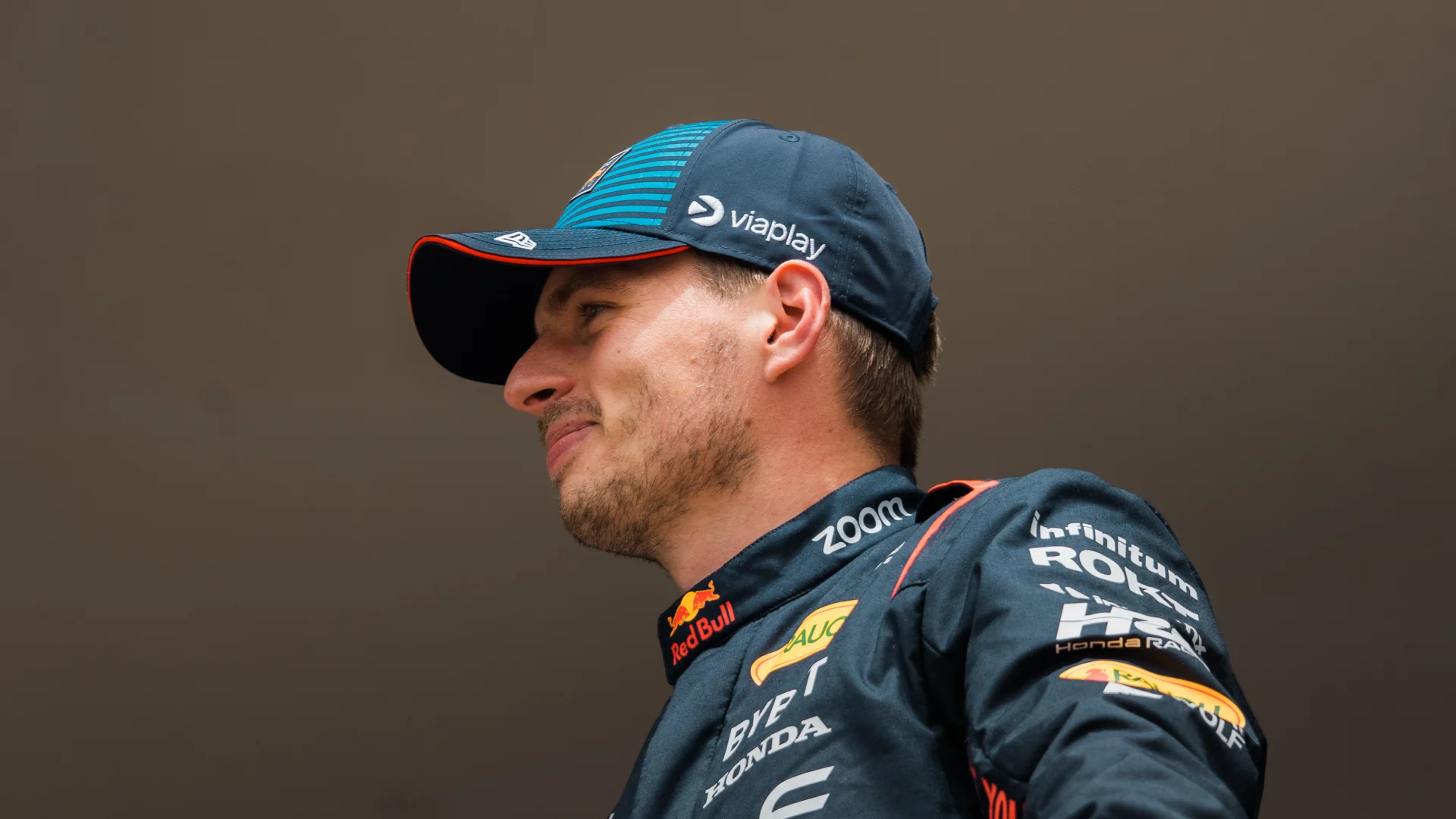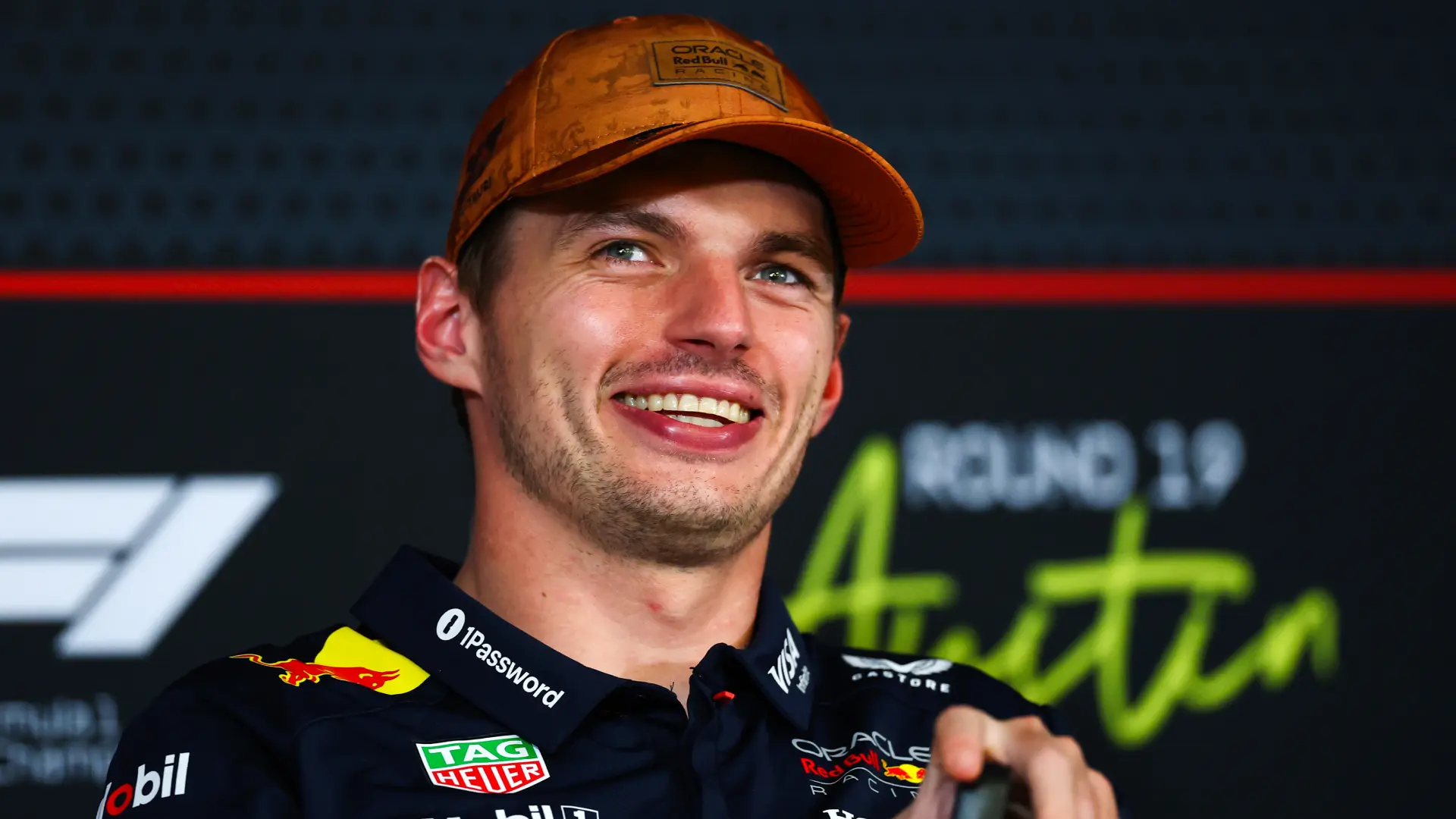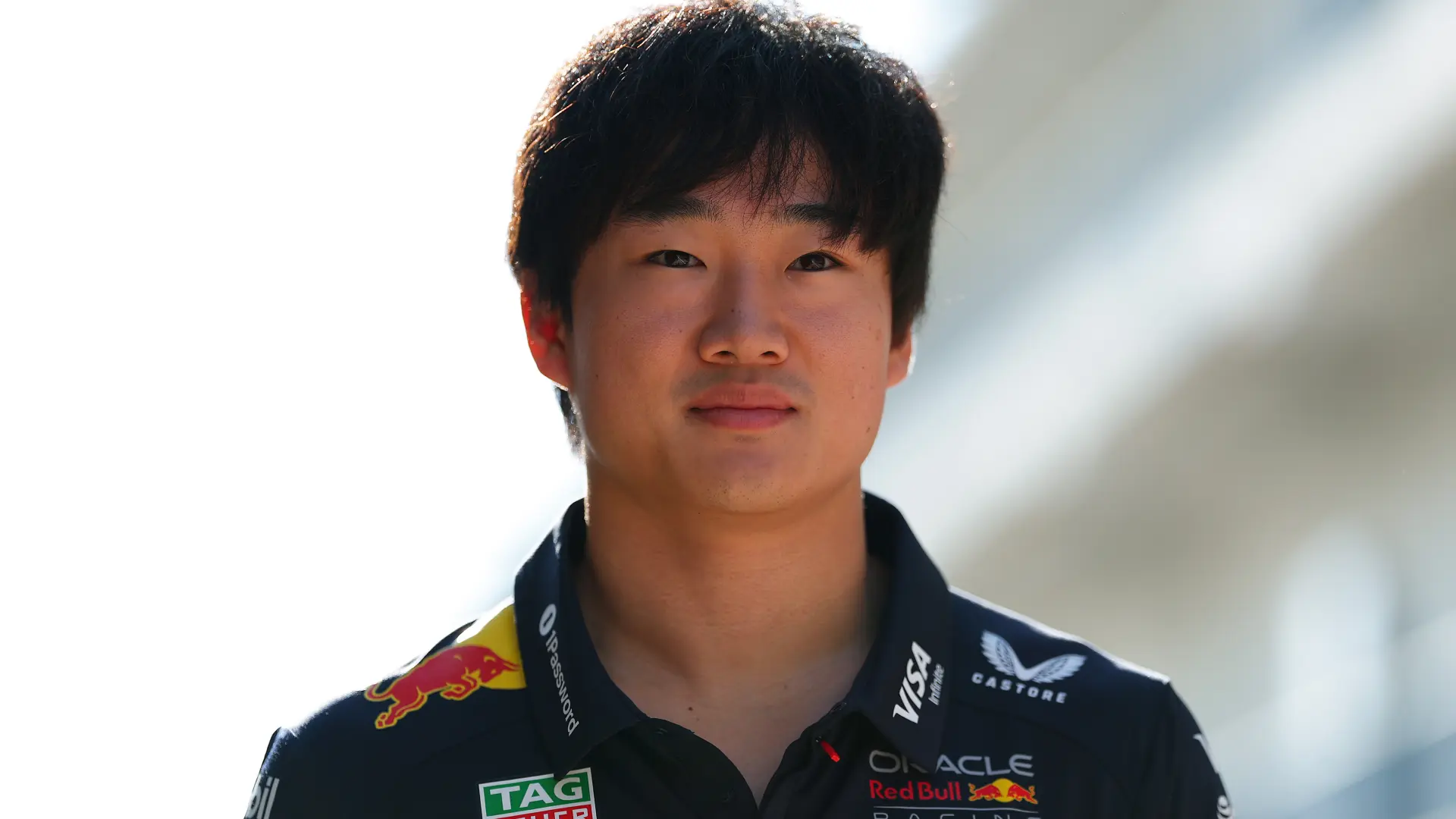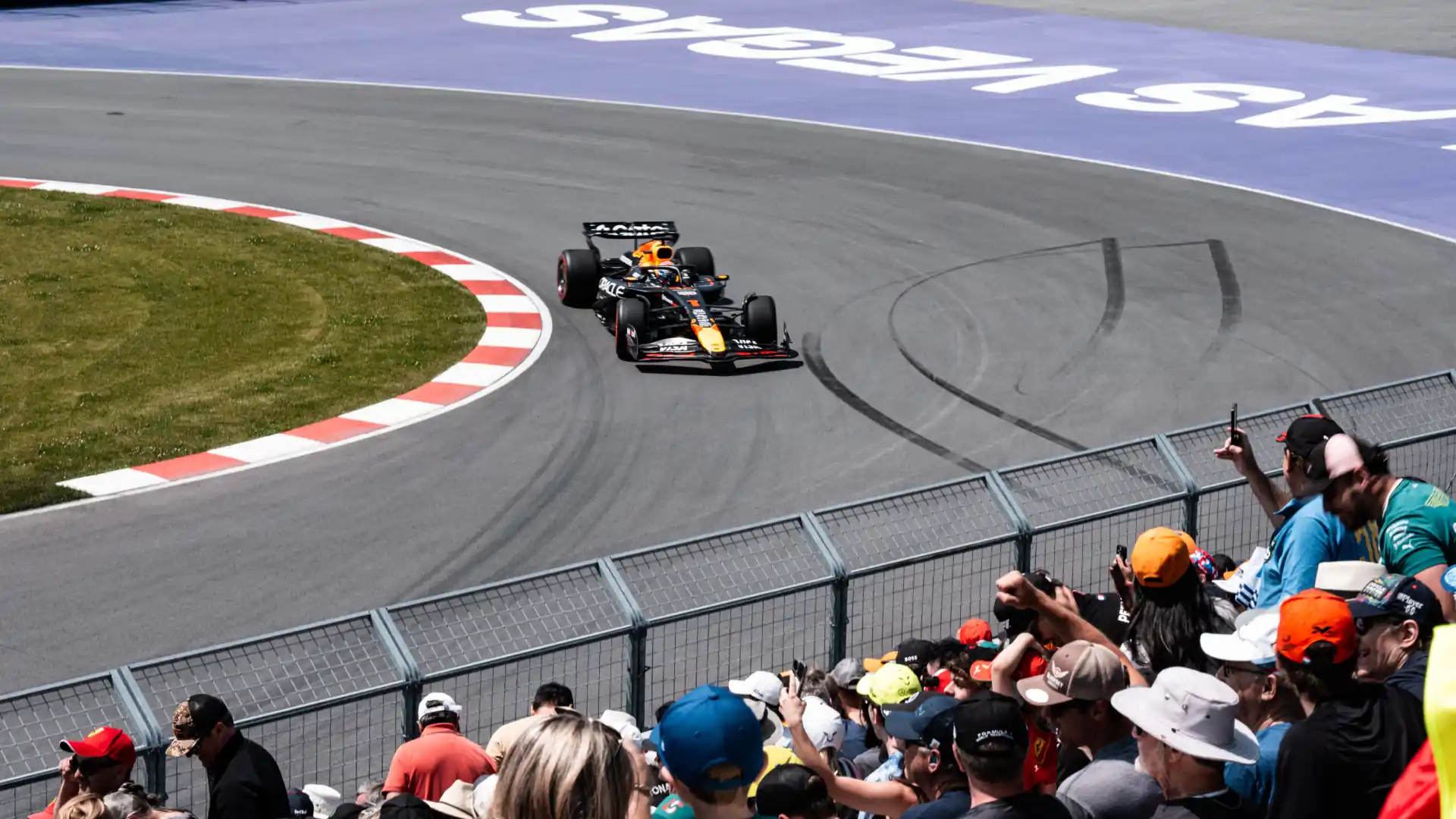Snapping photos from grandstands is one thing. But having the eye, hustle, and ambition to turn car photos into a motorsport photography career? That’s a whole other race.
For Jonny Rogers, that race started with Instagram posts of the London streets. Jonny parlayed his natural talent into bigger and bigger opportunities, ultimately finding himself photographing major motorsports events, including the Las Vegas Grand Prix and the Goodwood Festival of Speed. Becoming a motorsports photographer is a grind, but the high from seeing his work come to life is well worth the price of admission.
Position: Freelance photographer
His Role in One Sentence: I’m a photographer from London, UK, specialising in automotive and motorsport digital media.
Years in the Role: 3
Jonny's start in motorsports
#1. What was the first moment that you discovered racing?
Oh my word, you’re really taking me back here. The first grand prix I actually remember is the 2003 Australian Grand Prix. And from there I became a Jordan and a Jaguar fan, unbelievably. But that must have been when I was—well I was born in ‘98, so 2003. So I was five years old.
My parents got me into F1, particularly my dad got me into F1 when I was very, very young. He bought me F1 Hot Wheels and all that kind of stuff. So he cultivated it from a very young age.
#2. When was the moment you decided this is what you wanted to do as a career?
It was probably only a few years ago because I started photography like street landscapes in London. I started posting on Instagram, got a bit of a following and was really enjoying the feedback I was receiving, and I had a lot of people telling me my images were very good so I just kept going with it.
My dad used to be a photographer as well, not professionally but he did it as a hobby and he was very good at it. He could have gone professional but decided not to. And then from there I went on to travel photography which I think is [what most photographers did]. They went from whatever they started with straight into travel because travel landscapes just blew up all over Instagram around 2015 to 2019. So I started doing that, but there was very little money to actually be made there. It was extremely competitive and extremely difficult to get into. And then I just thought, well, I've always loved motorsports. I will stop everything I'm doing on a Sunday just to watch F1 and IndyCar and NASCAR and whatever's on at the time.
So I thought, well, why don't I just try and take this into motorsports? Why don't I just try and mix photography and motorsports and see what happens? So I started going over to my local racetrack, Brands Hatch, and just [shot] as a complete fan. I started to grow my portfolio and then started to reach out to teams, companies, agencies, anyone I could really get a hold of until I got my first gig. And from there it's been a rinse and repeat scenario of sharing your portfolio to anyone you can, hope someone replies, and then grow a relationship from there and hopefully do some work for them in the future.
#3. How did you get your photos in front of people? Was it all through Instagram?
It was pretty much all through Instagram. Luckily, I had a bit of a following on Instagram and I'd already worked with some fairly prominent brands as a freelancer. So one of my first big jobs I ever did was I worked for Panasonic and helped them to launch at the time what was considered a street photography camera.
It was a Panasonic GX9. Me and four other London creators were basically handed it and told, “go out into London take as many images as you can. We're gonna pick the best ones for promotion and then you're gonna run a competition to give one of one of these cameras away.” It's companies like that that can give you a fairly good name if you can drop that in a CV or an email or something like that. It instantly adds validation.
So people learn to trust you a little bit more if you work for big companies because they realize this guy knows what he's doing. And also luckily my portfolio was strong enough. I say luckily, obviously it was a lot of hard work. Luckily my portfolio is strong enough to also add to that validation as a photographer as well. So that was the main reason.
Jonny's current role
#4. How would you describe your current role?
Trying to find work? [Laughs]
My current role...it's a bit of a tricky one. The thing I found with motorsport photography—there's very few roles that require you just to take motorsport photos. I'm sure we'll go into this more later, but when I worked with 16K in Las Vegas for F1 I wasn't really shooting anything on-track. In fact, I was told, effectively, “we don't want you to focus on shooting anything on-track.” Obviously when you're next to the track you can shoot what you can when you can, but your primary focus is not that. What I found is a lot of companies and agencies tend to go more down that route of capturing the hospitality side of things because at the end of the day that's where the clients are based. So the clients for the agencies that I've worked for are looking for a more all-rounded picture rather than just what's going on on-track.
#5. What does a standard day look like when you're at a track?
I mean, a typical day when I'll go to a track… I mean it doesn't start just on the day. If it's a track that I haven't been to before, I will spend a good day beforehand trying to plan out photo spots and trying to work out where the best angles are. Looking on Instagram, looking at images, finding some inspiration, and then working it from there. And then when I'm actually on-track, it's more about working out, okay, I've got to look at a time table and go I've got this many sessions. I want to be at this place for this session and work out from there where I want to go. If it's a track that you know fairly well—for example with F1 when I went to Silverstone in 2024 I wanted to make sure that for qualifying and free practice 3 [FP3], when the drivers are pushing pretty much flat out, that I'm at corners where either the cars are gonna spark or there's likely to be a little bit of a mistake.
I think FP3 I went for Copse [Corner], where they'll all spark on the exit and they're fully loaded up. And then for qualifying, Maggots and Becketts, because again, it's where most of the time lap time is lost at Silverstone is on the exit of Maggots and Becketts. Someone runs wide, someone gets a bit of a slide on. But also you can get through previous research and previous experience—I know you can get really close to the track at Maggots and Becketts and you've only got one single fence in front of you, which, with a 600 millimeter lens, I can cut through quite nicely.
And then in terms of off-track stuff, I mean, you're looking for a crowd reaction more than anything. If you're looking for crowd reactions you want to be doing sessions that realistically matter. So qualifying, race, things like that. They're the ones that people are more likely to interact with and interact with what's going on on-track.
#5. What are the most rewarding and the most challenging parts of doing this job?
Rewarding
The most rewarding part is looking at the images after. For me the most rewarding part, certainly shooting anything F1, is at the end of the day. This has been my fantasy now for a good three or four years. And I always start out by looking at people's images and going, wow, these are insane. I'd love to be able to take stuff like that. And then when I come back from a race weekend and look at my images and realize, hang on a sec, this is pretty much on par with what I was fantasizing about. It's so satisfying. It's so unbelievably satisfying when you can get that right. When you can look at an image and go, to me, this is a fully professional image. To me, it's just, it's all about that. It's also just work. It's also just realizing that you're working in the field that you've been wanting to work in for ages. I think that's extremely satisfying as well.
Challenging
I would say it's more challenging on the physical side of things more than anything else. So I'll probably paint a bit more of context with this one, but photography is not my only job. I also do some night shift work on railways and things like that. And my sleeping pattern is mostly pushed to that side of things. So then having to be up at seven o'clock in the morning, traveling to a race circuit, that can get pretty challenging for me. But once I'm there and once I get going, for me it's not an issue. You push through everything. You don't even really feel tired. You push through everything and then you get back in the car afterwards and you're like, man, I'm really tired now. I've spent eight hours walking around and I've done about 30,000 steps.
#6. What are the three qualities that have helped you succeed as a motorsport photographer?
Perfectionist
Striving for perfection is something that's always helped me throughout my career. It's editing an image and taking a good day to look at it. Not necessarily for the whole day, obviously. You just look at it like it was a lock screen on your phone or something. It keeps popping up and then you just start working out from there, okay yeah maybe I could open this bit up, maybe I can make this bit lighter, maybe I can make the lighting look a little bit more natural, make it softer, add in a little bit more depth and you go from there. You just go through stages of trial and error. And for me it's always striving for that perfection and it's not releasing an image until I'm almost 100% happy with it.
Motivation
You have to have the motivation to keep doing this because there will be times where work is a little bit thin on the ground or you're constantly facing rejection and things like that and it's very hard at some point to go, okay this isn't working I'm just going to go and do something else with my life. But for me I don't know, it's not really an option. It's something that I have thought about, especially this year. But to me, it's not really an option. This is what I want to do. This is what I want to be doing. F1 is my absolute end goal. I've been very lucky in a way to actually have some experience in that now. And it's just made me want to even more. For me, that's it.
Perseverance
Going to tracks and just keep on practicing, keep on just pushing through. Every single time I go to a track it motivates me even further just to be like, yeah, this is absolutely what I want to do, I just need to keep pushing with it.
I don't want to sound big-headed here, but for me I know my portfolio is good enough to get into this full time and I know that as a photographer I'm good enough to get into this full time. It's just finding that right person that will give you a chance more than anything and that takes a hell of a lot of networking, a hell of a lot of emails, a hell of a lot of LinkedIn connections, a hell of a lot of phone calls, it's a massive push. And that goes back to the rejection part. You will face a lot of rejection. In today's times when the economy has just gone to shit in general, you find a lot of people saying, no, we don't have the budget for that, or we really like your work and we'll definitely be considering your future projects, but we don't have anything right now.
It's very easy to get disheartened from that. It's the skill and quality about just not getting disheartened, not getting demotivated. Just keep on going, keep pushing.
Jonny's advice
#7. If you could go back and give advice to your younger self, what would it be?
It's really corny to say keep pushing isn't it?
I mean for me when I was younger—when I first started photography—one of my main motivating goals was Instagram itself. It was to be an influencer but not a stereotypical influencer type nowadays. It's more just being a photography influencer. Someone who posts images, a lot of likes, gets a lot of good and negative feedback. I welcome all types of feedback. But also, obviously, attracting the attention of brands and businesses alike that will then hopefully give you work.
The biggest piece of advice that I wish I'd followed more than anything was to learn how to be adaptable. When Reels took off, I never really got into Reels. And I realize nowadays that if I just maybe followed some of the trends, I'd probably be a lot bigger, a lot more successful now.
For me it's learning how to be adaptable, learning new techniques and things like that and not just sticking with photography because I really wish nowadays that I was a lot more prominent in videography and it's something I'm learning but it's taken quite a while to actually learn.
#8. What advice would you give to someone who's looking to be in your position today?
Keep going out and keep taking photos, especially if it's motorsport images. Just go to your local track. It doesn't matter what's on. Go to your local track, just keep taking photos. If you're posting on social media, keep tagging teams and drivers and sponsors, tracks, whatever. Eventually someone will find it and someone will take notice of you. For me that's just the biggest thing, it's just pure perseverance.
Jonny's career highlights
#9. You can't always be at a racetrack photographing cars. What are novel ways that you practice photography?
I've never released these photos but I own and collect a lot of model cars. And one of the things I have done is I have tried to just take photos of model cars in a studio setting, which I don't have, but I'll clean up my desk and I'll stick them on my desk and I'll take photos. That's a little bit of a fun way I guess in which I practice.
Most tracks in the UK have something going on most weekends, so for me it's fairly simple just to drive an hour, go to a track, practice motorsport photography for a bit and then come home and then the editing as well. I edit a hell of a lot of photos. I mean, at Goodwood [Festival of Speed], fairly recently I took, oh gosh, like 17,000 photos over four days and literally this entire week I've just been going back through and editing photos that aren't necessarily for clients or didn't have to be edited and sent out straight away. It's just more photos for me.
Editor's note: Check out our Goodwood Festival of Speed coverage for more of Jonny's amazing photos.
Greg: What do you use for your editing workflow? Is it Lightroom and Photoshop?
I use Lightroom and then if there’s anything I want to clean up I'll then take it into Photoshop. I do sometimes add a little bit of path blur to my images, especially with long exposure images, just to smooth out the background a little bit more. In which case, then I'll take them into Photoshop to do that. But apart from that, it's pretty much 100% Lightroom.
#10. What have been a few of your favorite photos in recent memory along with context on how you framed the shots?
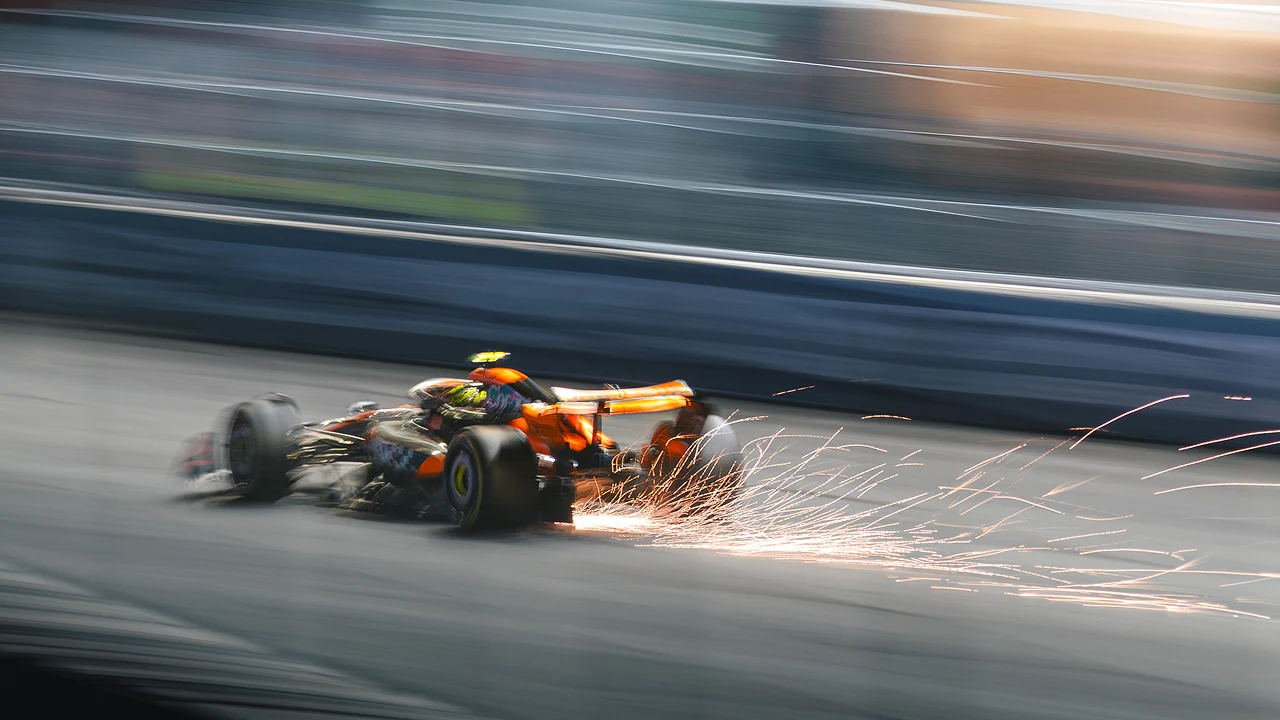
So it's taken of Lando Norris and his McLaren blasting down the strip at Las Vegas. I managed to capture him sparking. I think he was just about to enter the braking zone. There's a section before the braking zone, you'll notice it on TV, that's a little bit bumpier. And I noticed as I was shooting there that they were starting to spark closer down towards the end of the straight. As I was panning, I just sort of kept going until I got to that point and I caught quite a few of the cars sparking but for me this one was one of my favorite ones.
The image itself has been cropped in massively. It's like a tiny corner of the image that I actually caught this car in. I managed to zoom in and enhance it, sharpen it up a little bit to create a full image out of it.
I mean it's on here mostly because this was my only, well as of right now, my only opportunity to actually work within Formula 1 itself, something I'd never done before. It was just such an incredible experience. Just actually being able to interact with fans and the atmosphere that fans would create.
It's not quite perfectly in motion, if that makes sense. So it's not super sharp. There's a little bit of motion blur going on around the car, but with just the insane amount of sparks shooting out back of it, it adds to just the pure chaos. And it's just the general idea of [how difficult it is] to capture something going that fast. It just helps to accentuate the speed of F1 cars perfectly.
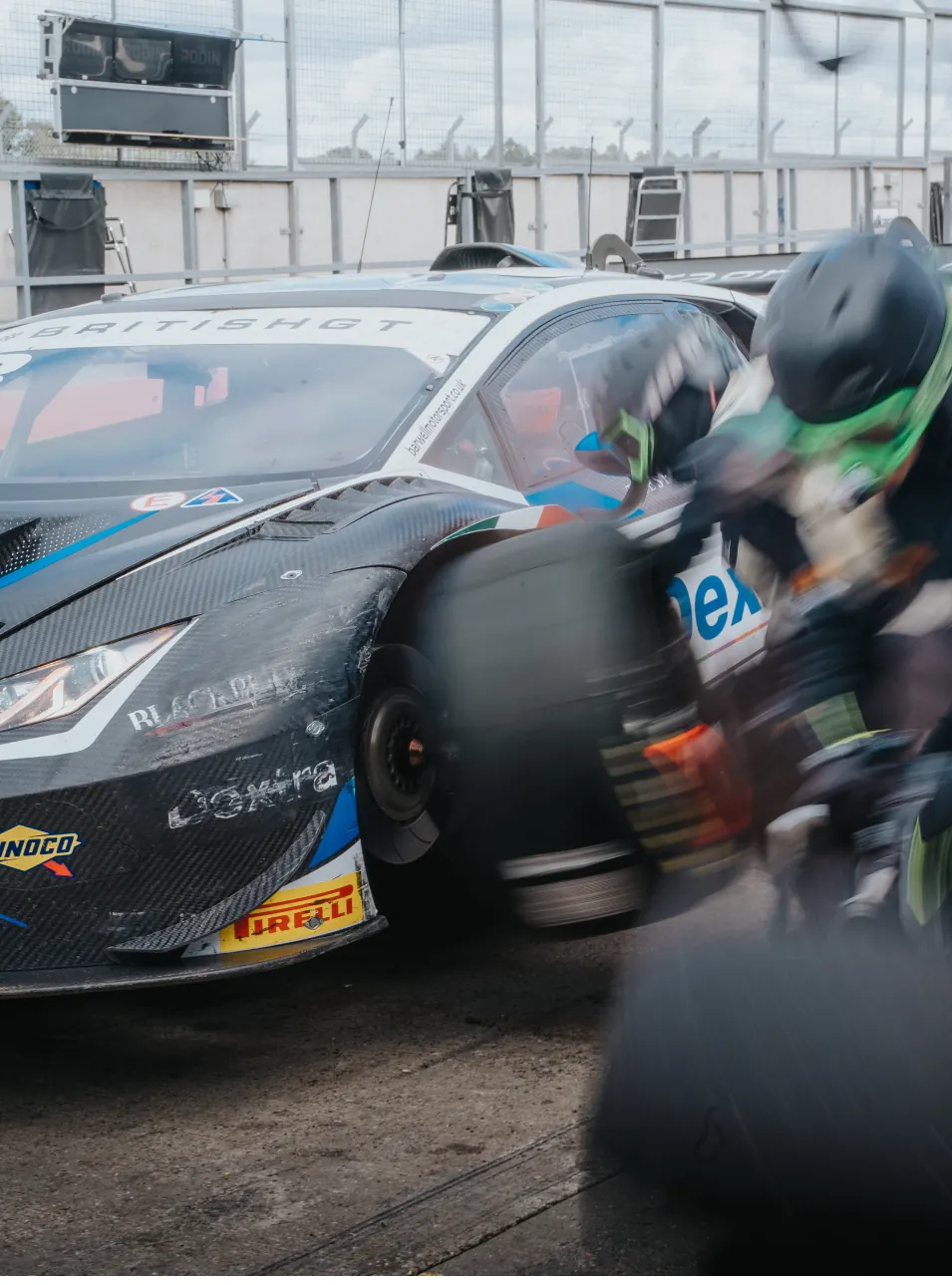
For me, one of the most fascinating things about motorsports is the pit stops. F1 is like the pinnacle in that sense. I still don't fully understand how they're able to change four wheels and do a wing adjustment in literally under two seconds. It's insane.
But certainly with GT pit stops in a way it's a little bit more impressive because they only have two or three people actually working on the car. So the car gets lifted up on jacks which actually come out the bottom of the car itself. No one actually has to do that. The driver presses a little button on the wheel when he stops and the whole thing comes up. And then it's basically two people running around changing all four tires.
The choreography of it is just phenomenal to watch. Especially when you're up close. I wanted to show that off in a way that you get a sense of just how fast these guys are working, but also the precision in which they're working. The fact that they’re not hitting each other, not bumping into each other, they're not making mistakes. So I just lowered the shot speed on this image.
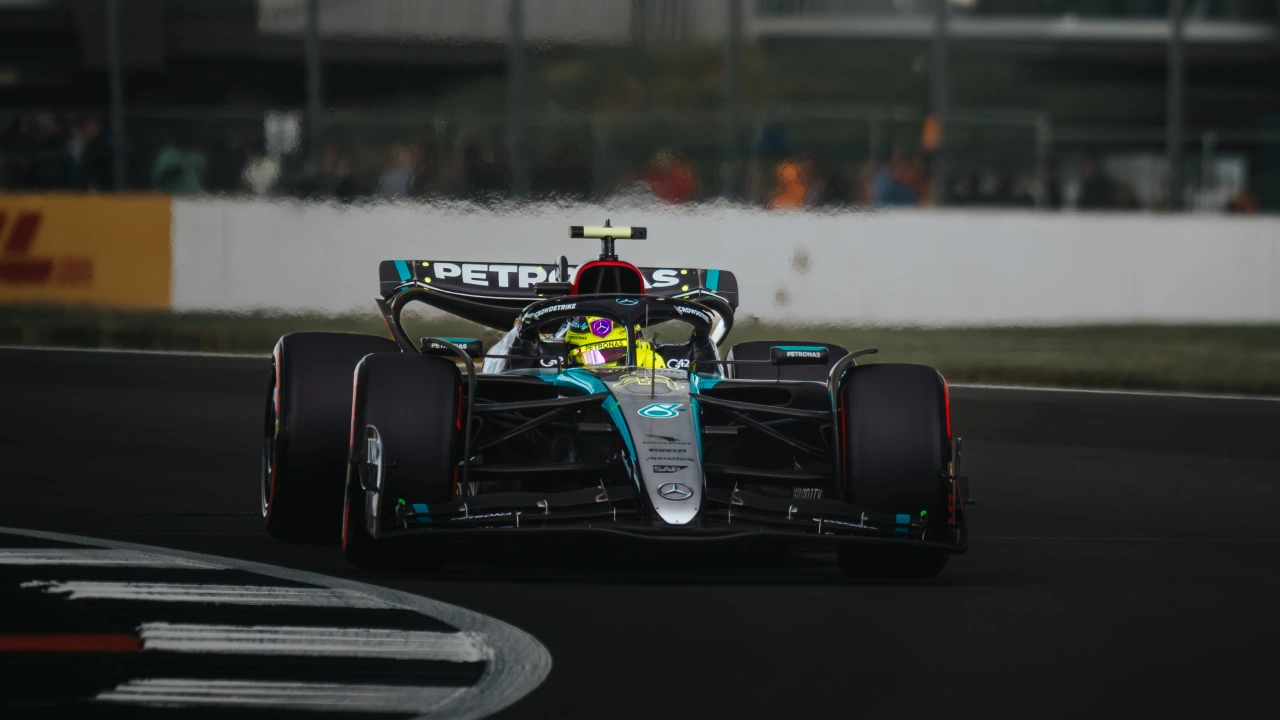
So I mean, it looks relatively unremarkable. And in a way, I would say it is. But for me, this is more an image that encapsulates my love for Formula 1, because this was the weekend that Hamilton had his, I would say, probably one of his most iconic grand prix weekends of all time.
And for me it holds a lot. Because it was a motivation to myself to just keep going. Hamilton had been struggling for ages. And the fact that he never stopped, he always persevered, he always kept pushing 110%. It was just—for me it was good motivation just to remind myself: yeah, you may have some rough times in photography, but just keep going, you never know what's gonna happen. If you put the effort in, something will come out of it.
And shortly after I took this image, I then got notified that I was going to be going to Las Vegas. For me this was just such an incredible moment, being able to be there that weekend.

This image perfectly encapsulates two photography styles that I would say have started my journey in photography, which was motorsports but also landscape photos as well. And this was taken at the top of a hill at Goodwood. I don’t remember exactly what day it was but there was a storm incoming, and everyone was just rushing around trying to get things done as quickly as possible before it absolutely started coming down. And I caught this image and at the time I didn't actually realize exactly how much detail there was in the background in the sky.
And then realized that actually what I'd captured was a storm coming in, and I took it into editing and started bringing out a lot more and ended up with this. And also at the time it was my favourite team, Mercedes, because if you hadn't worked out by now I'm Hamilton fan so yeah, I think this was the 2021 car as well which for me is just such an unbelievably iconic season excluding the way that it ended.
.webp)
So if you don't know where this is, you're not an F1 fan. It's as simple as that. Obviously this is a Eau Rouge. The reason why I included this image is because it was so unbelievably hard to actually get. As you can imagine, everywhere around Eau Rouge, apart from the grandstand, is pretty much covered off. You can't really see a lot of the track and they do that because they don't want people hanging around there.
A friend of mine who runs a Dutch photography community called The Dutch Shooters—he'd been to [Spa-Francorchamps] a few times and I'd gone with them. They were doing a photography meet there so I went and thought it'd be a great opportunity to photograph Spa. And there's a gate that's maybe like a quarter of the way up the hill I would say that has some space under it where you can stick your camera and take photos of them as they're going up Eau Rouge.
The reason why I've included this image is because I couldn't see a damn thing. The sun was shining on my face. I was literally on tippy toes trying to stretch over the gate trying to get the shot. I couldn't see anything on my screen because of the sun glare. It was a mixture of hearing the cars go over the curb at the beginning of Eau Rouge and then just seeing a very faint movement on my screen. As soon as I saw anything on my screen I would just whip pan it all the way around. And I managed to get this image, which I mean, for me, is at one of the most iconic places in F1. Being able to get a decent panning image, certainly in the way that I managed to do it, for me is a massive success.
Want to learn more about other professionals across motorsport series? Then check out all of our Fast Lane interviews, or jump right into one of these:
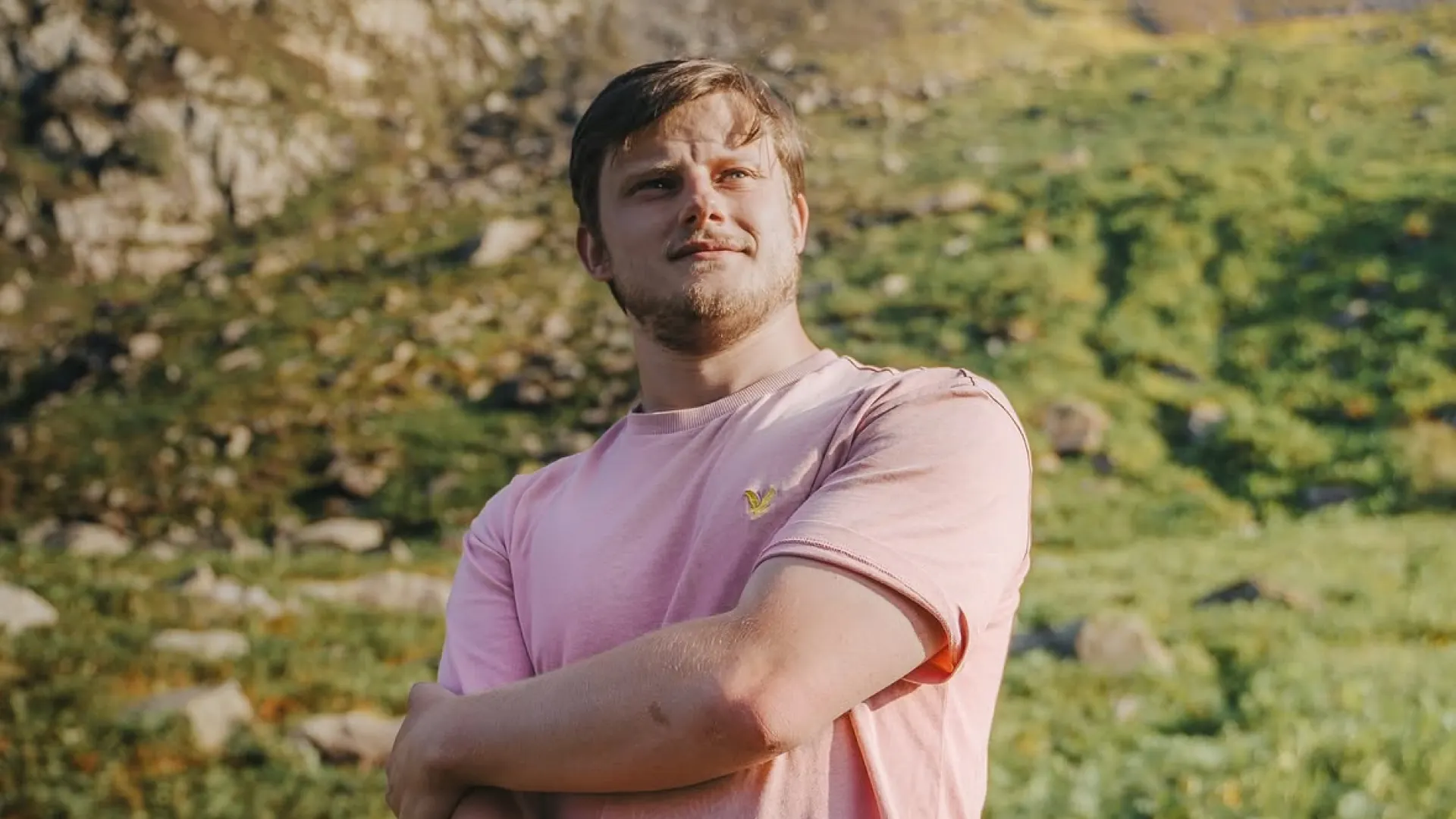
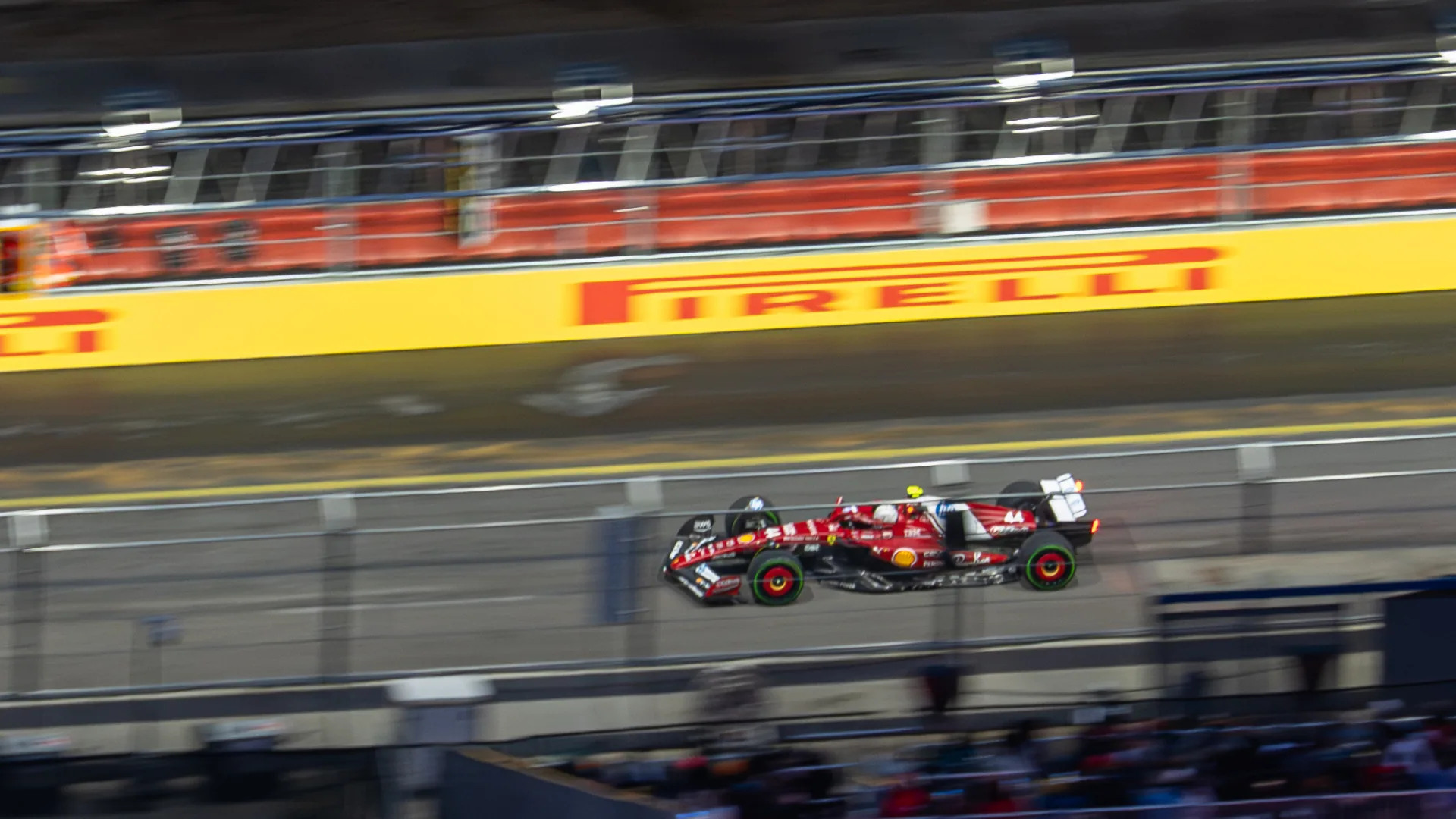

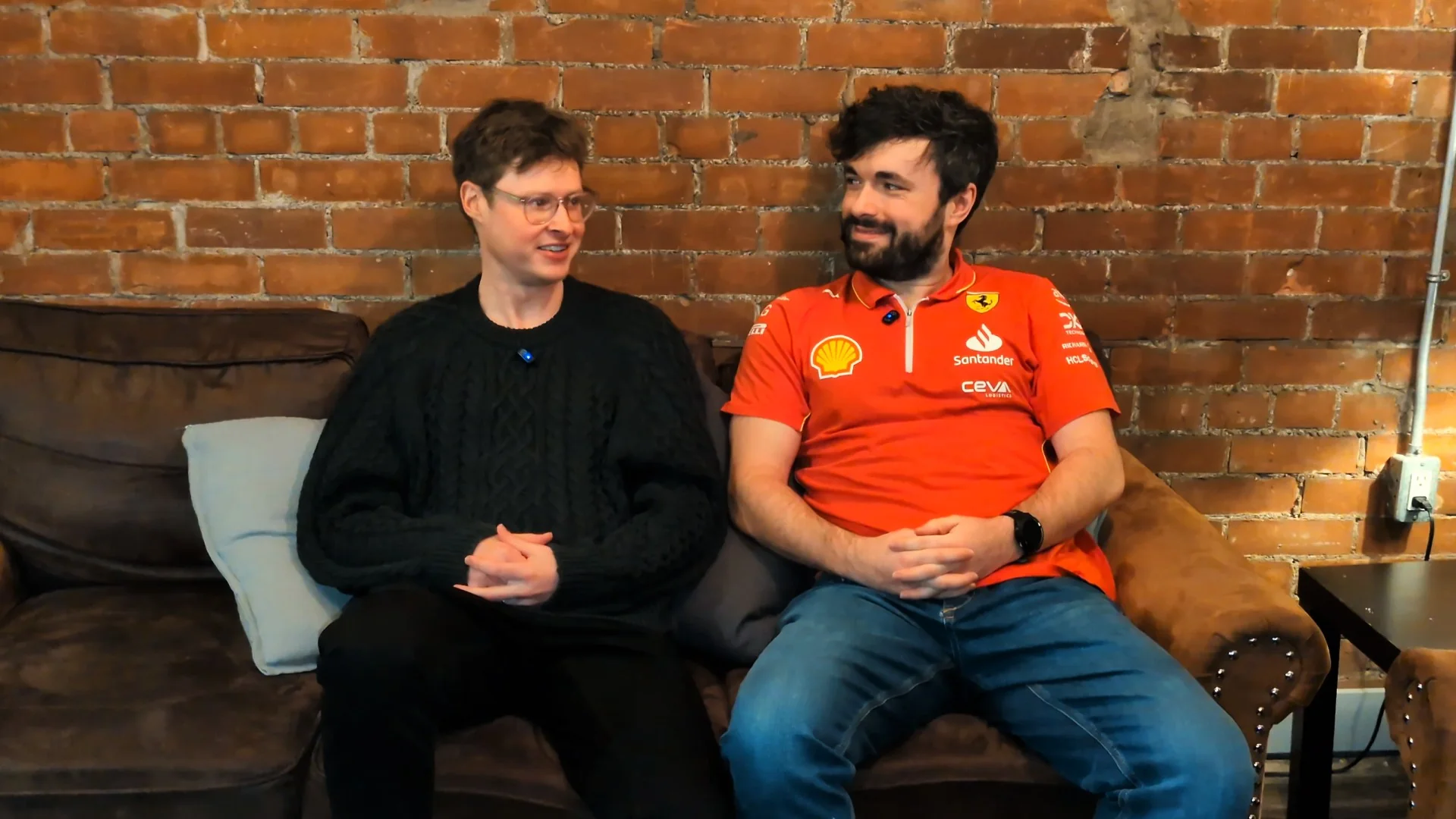
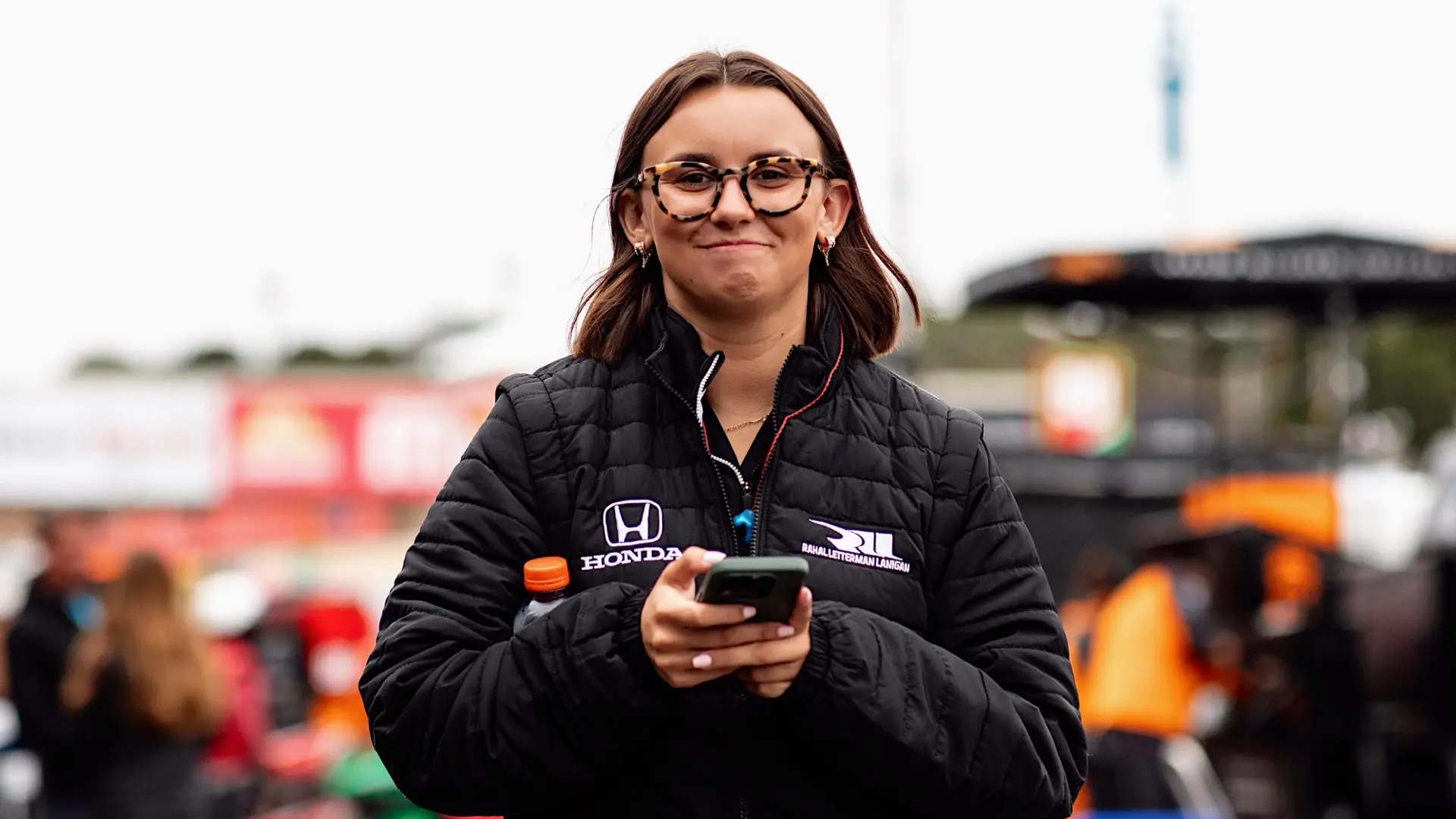
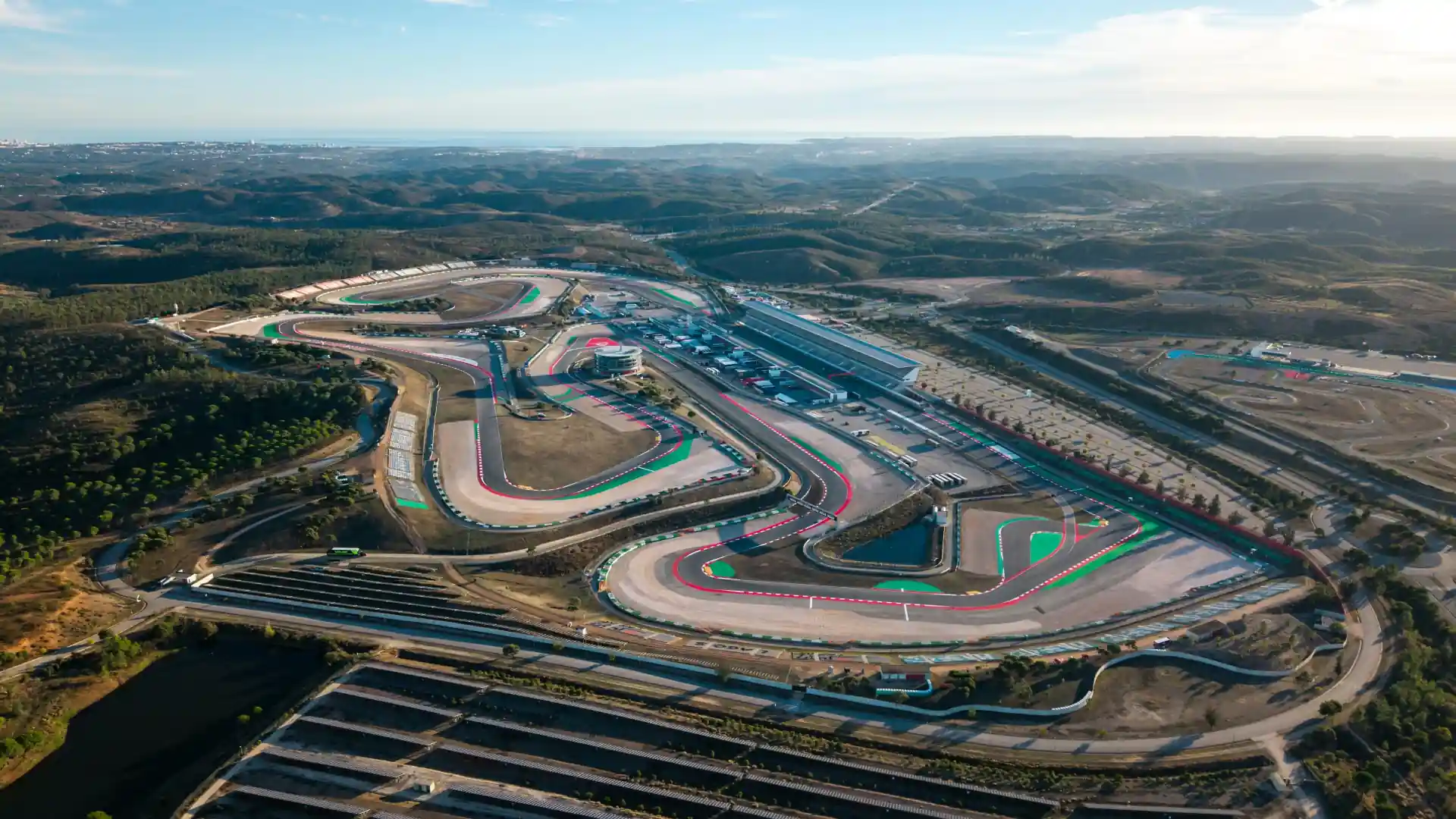

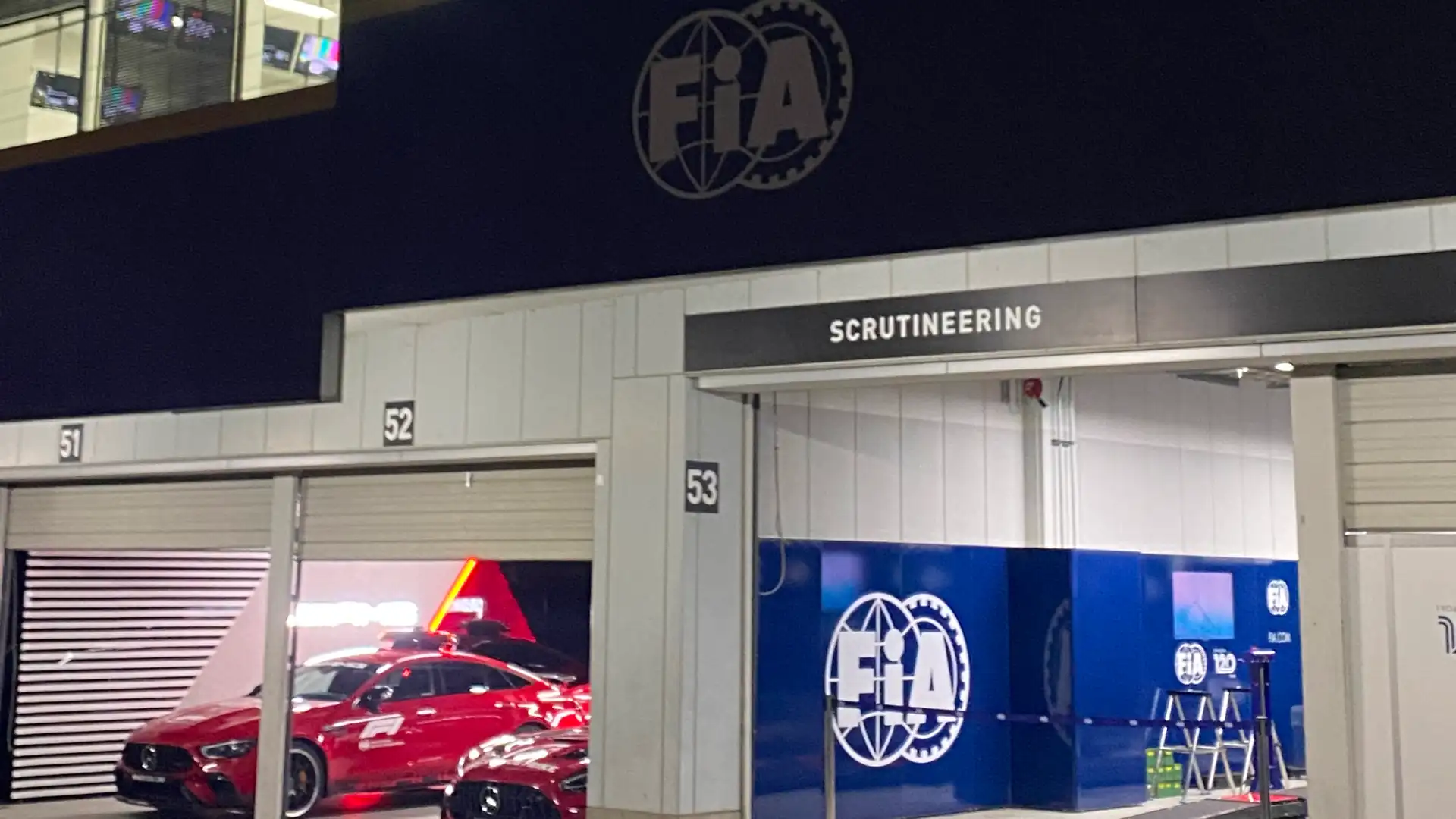





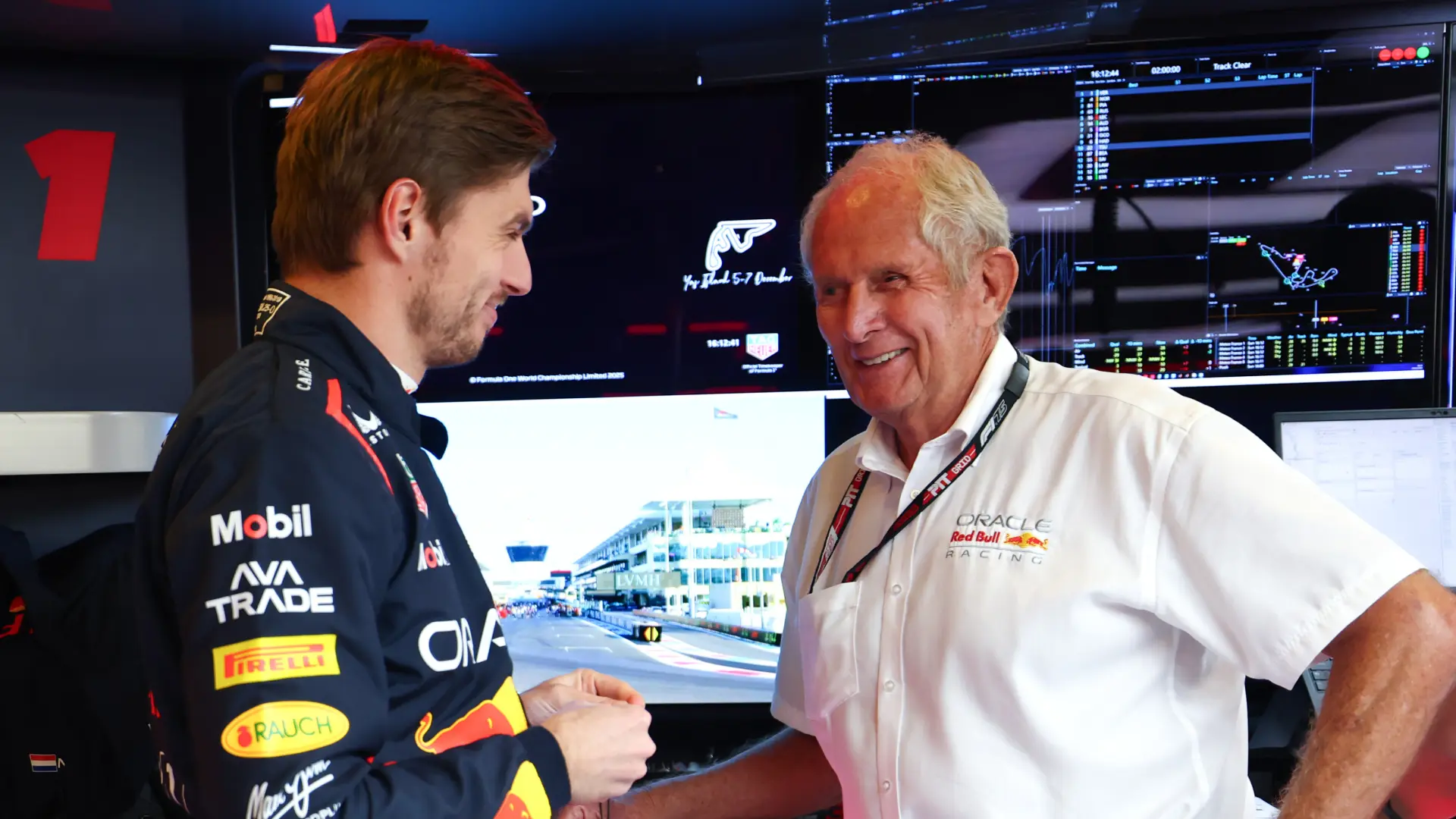

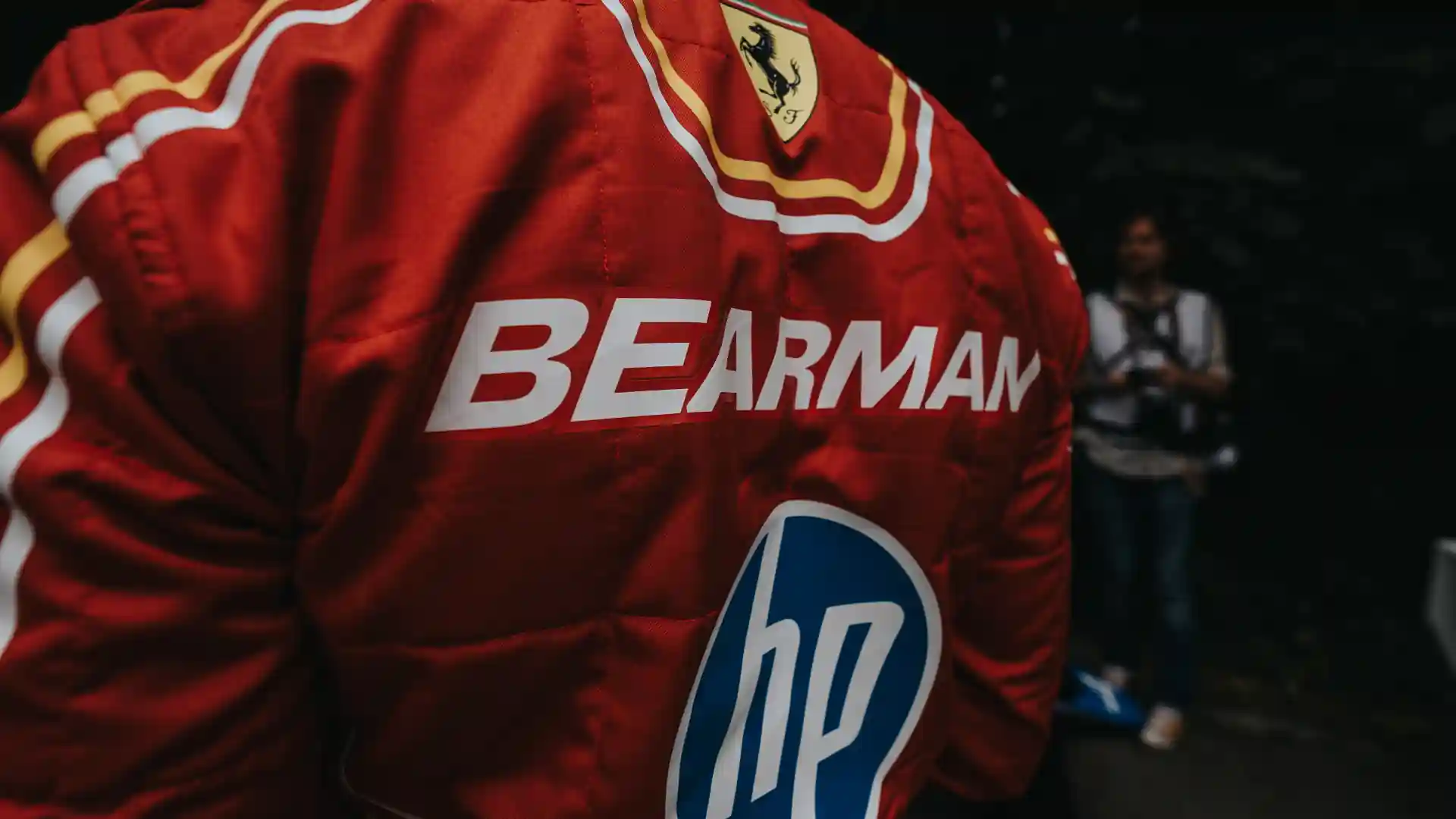
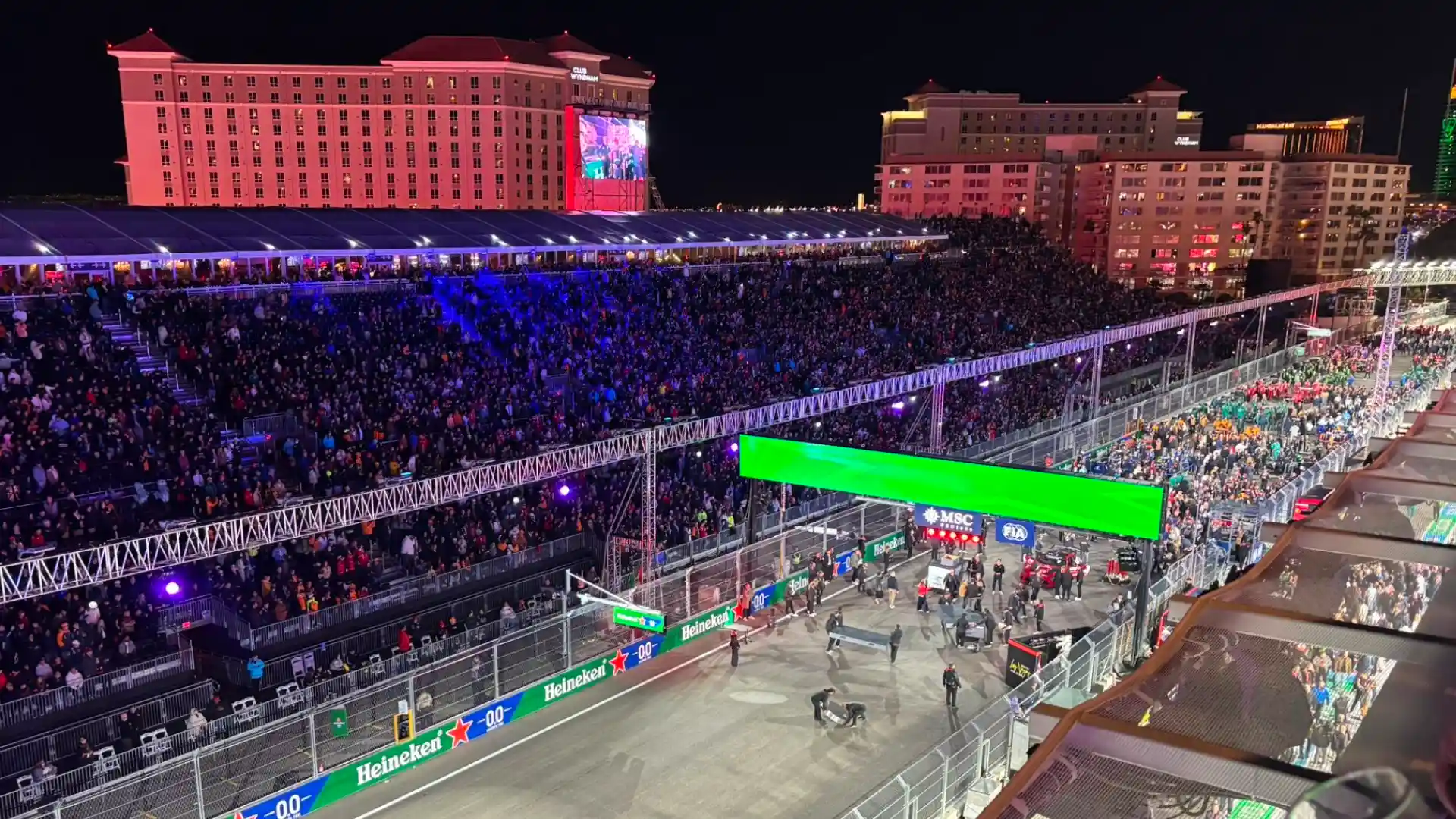
.webp)
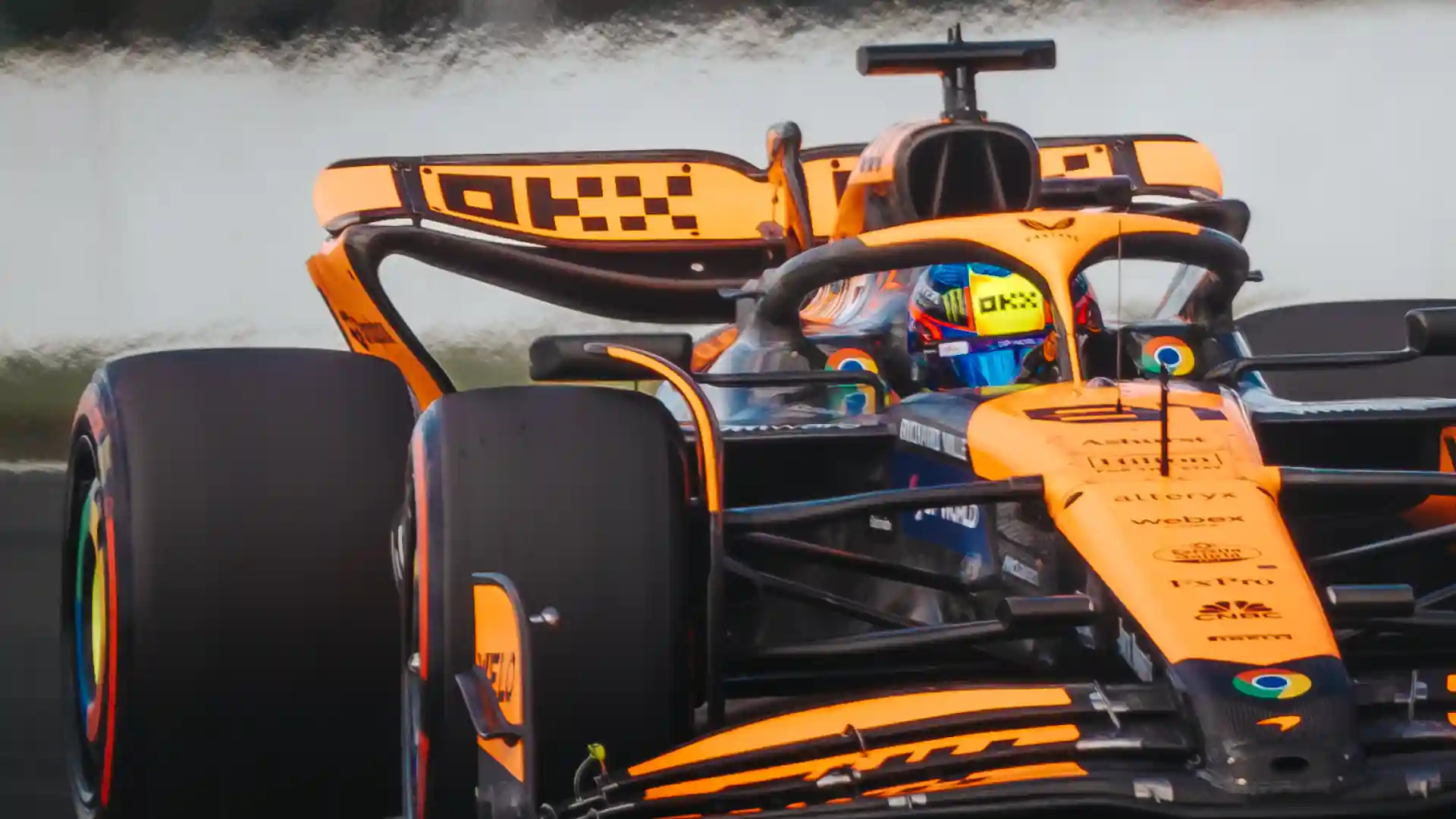

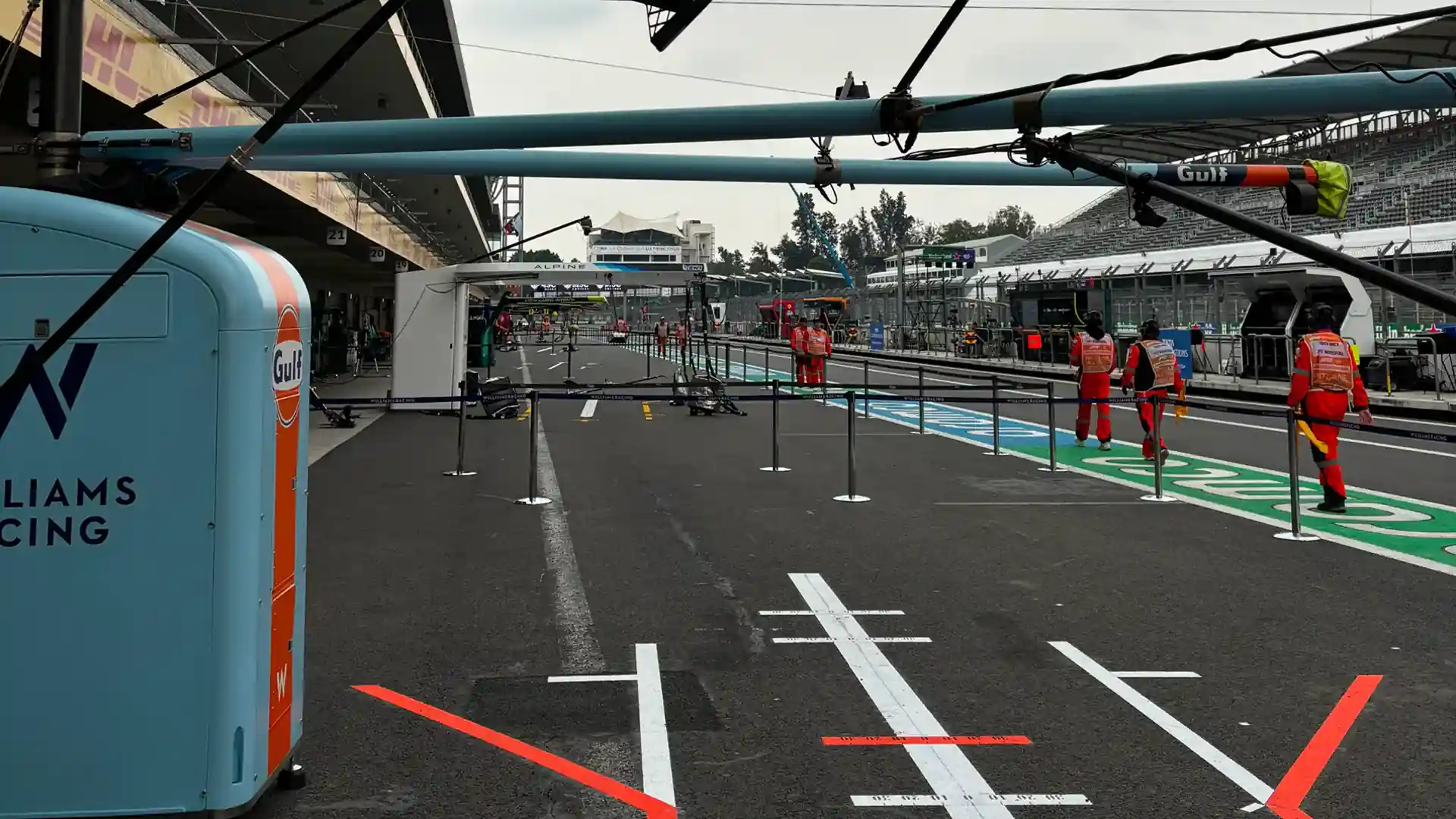
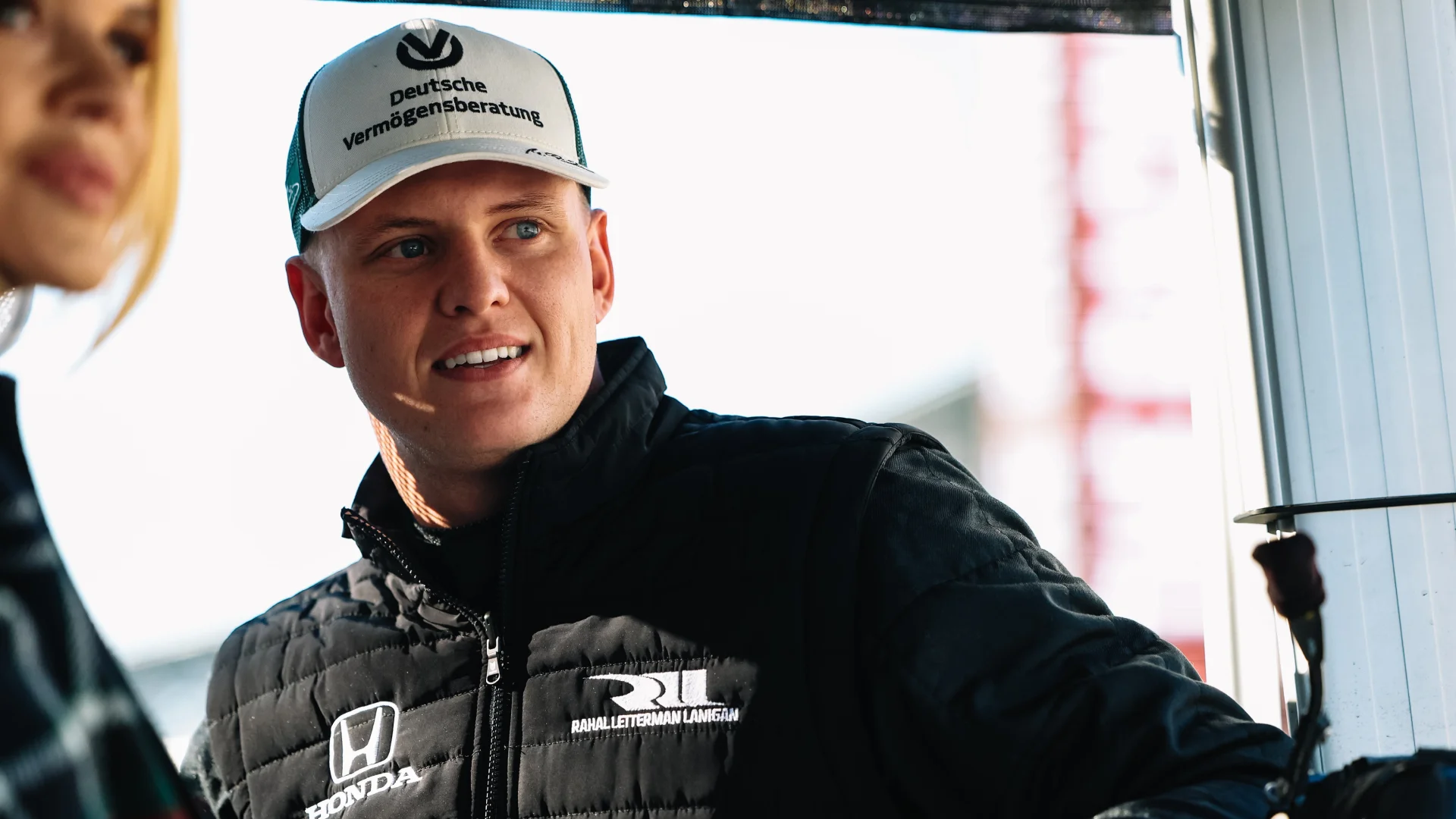



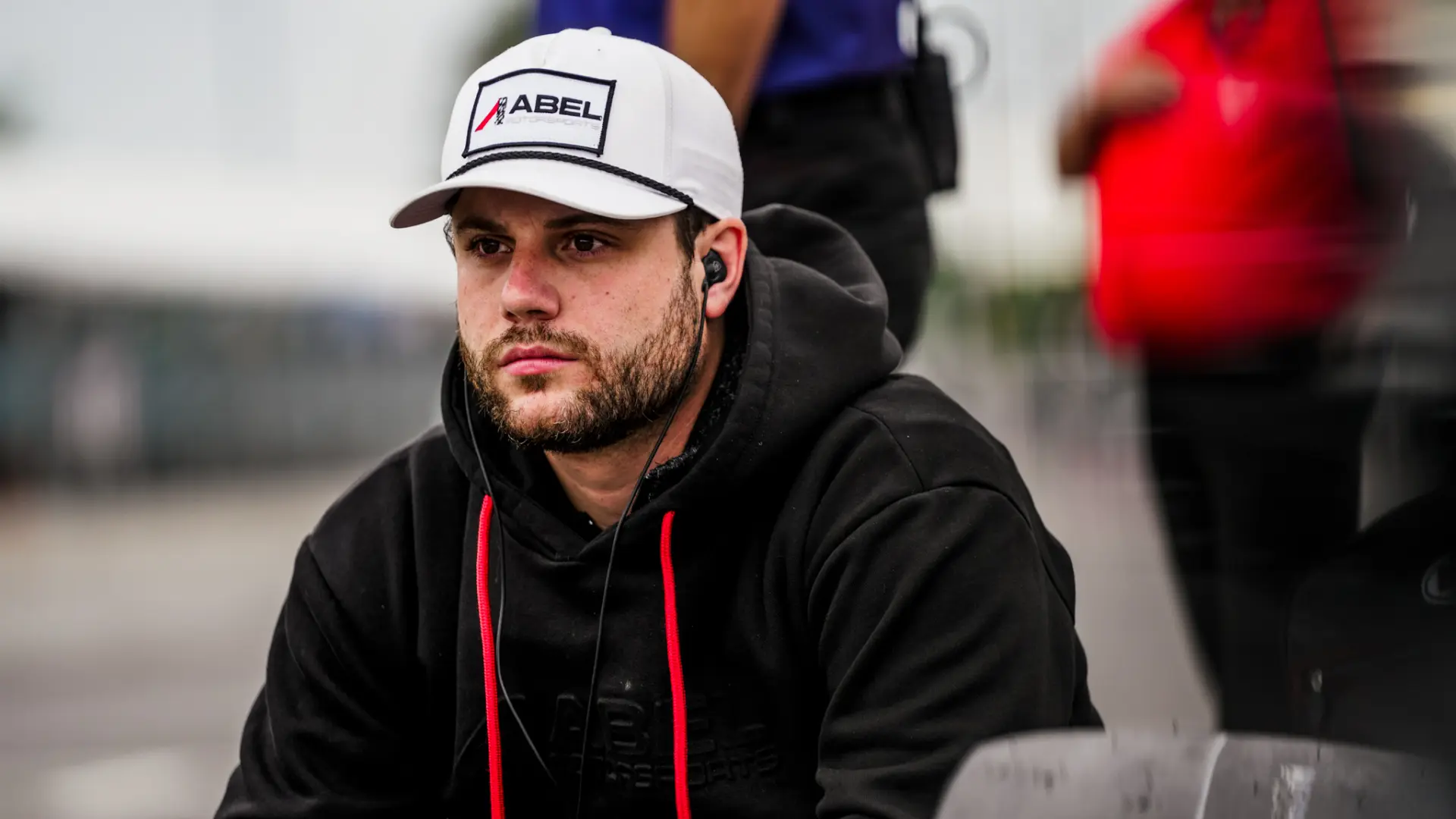

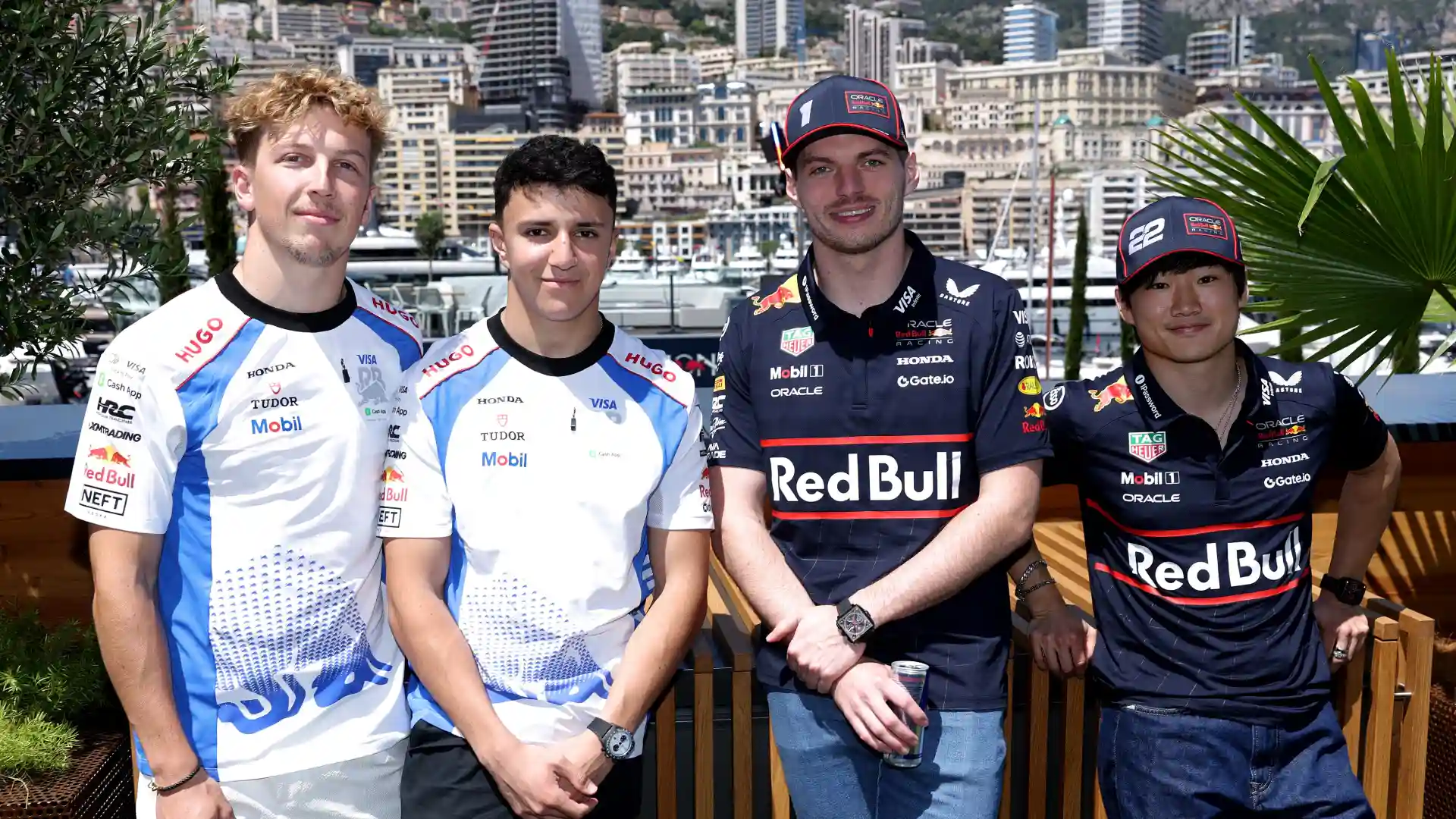

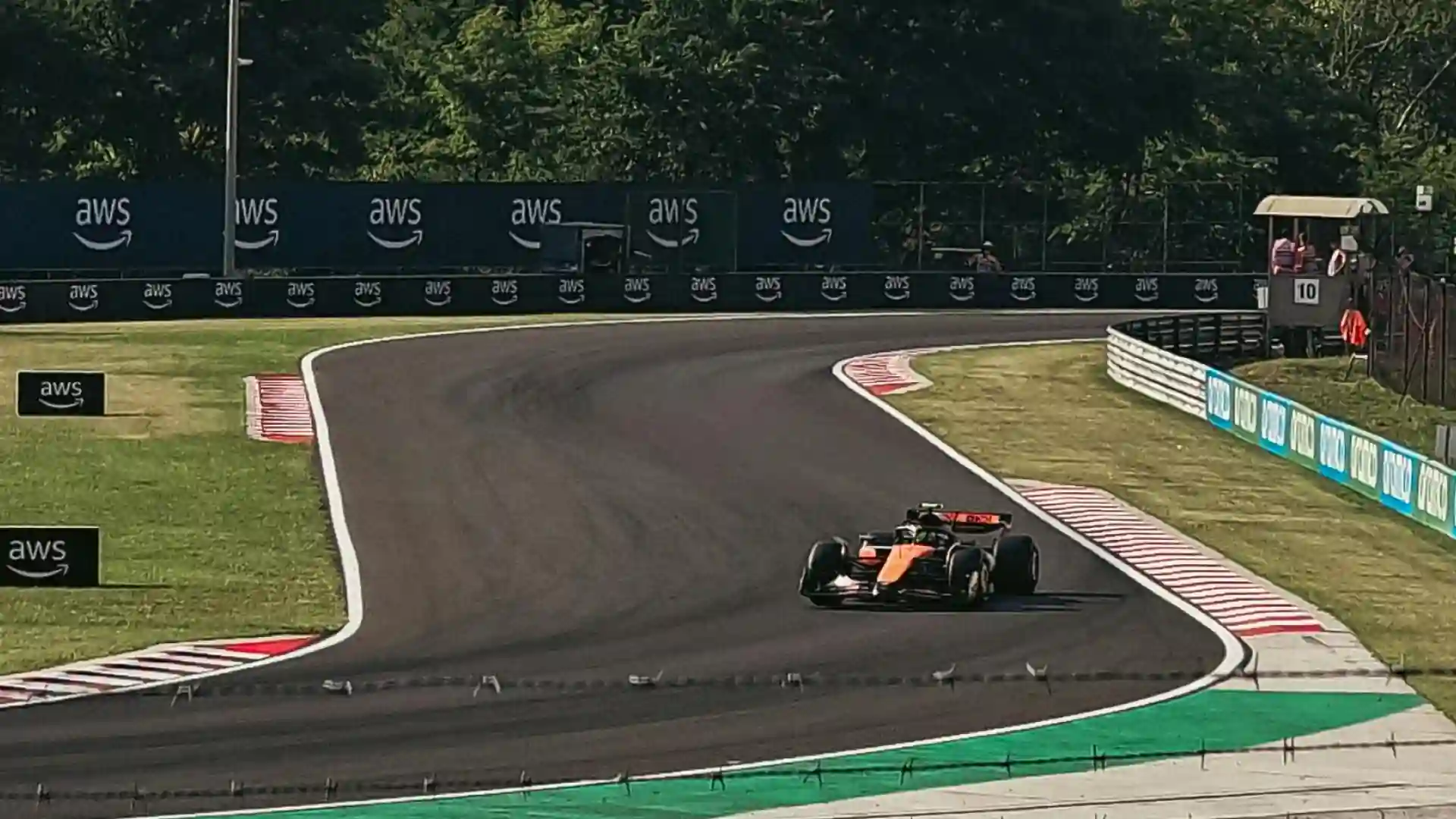

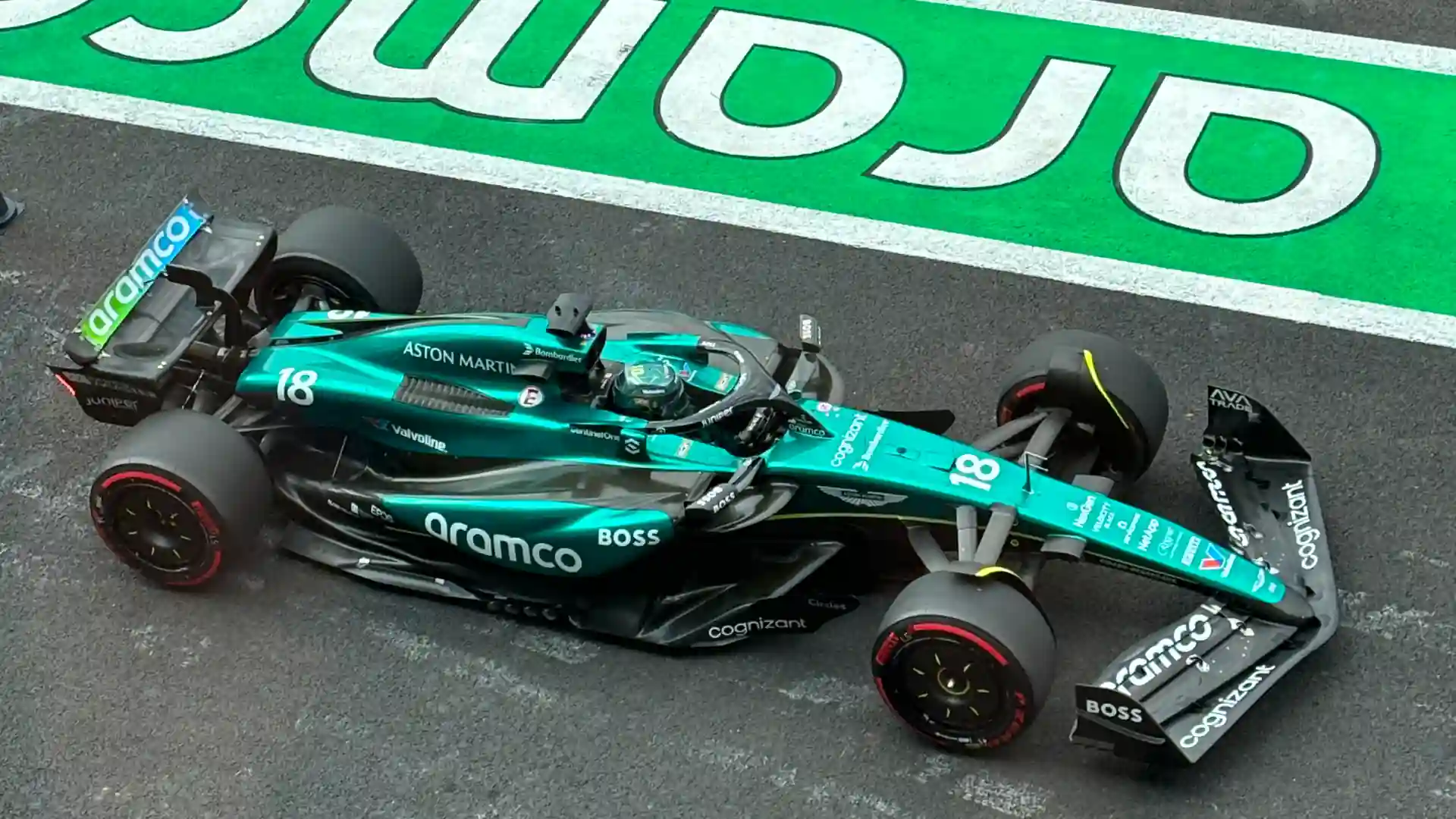
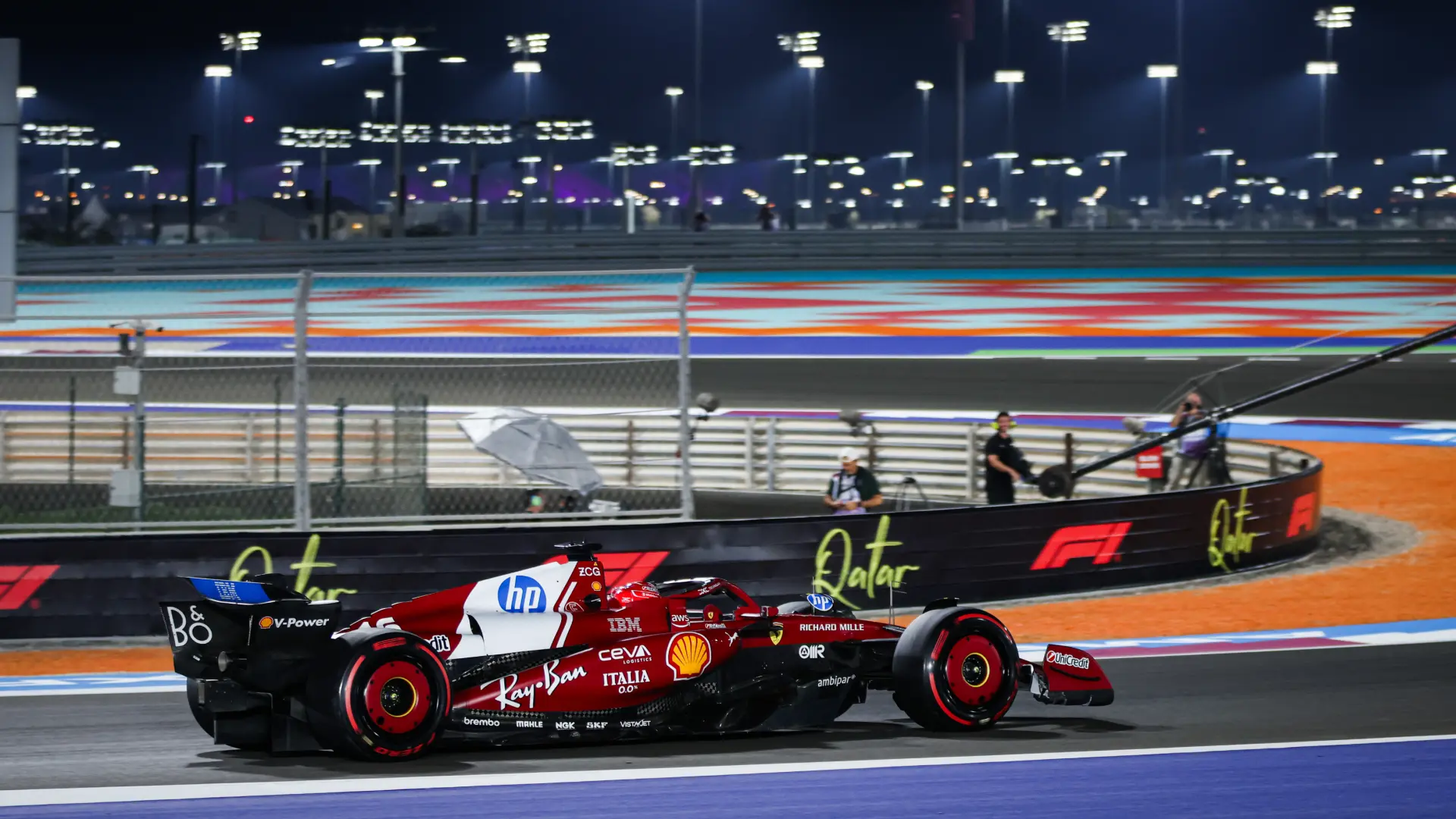



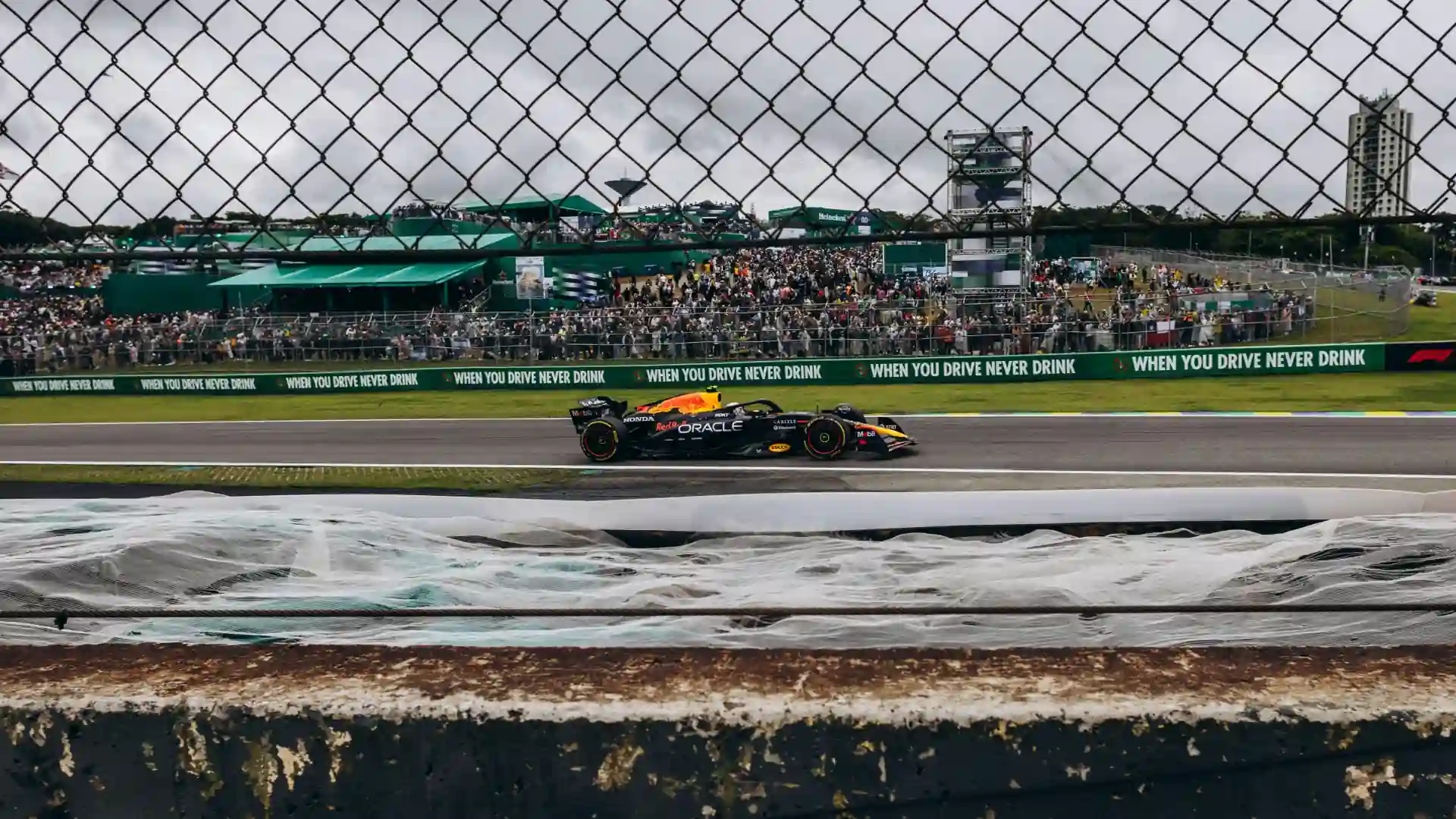

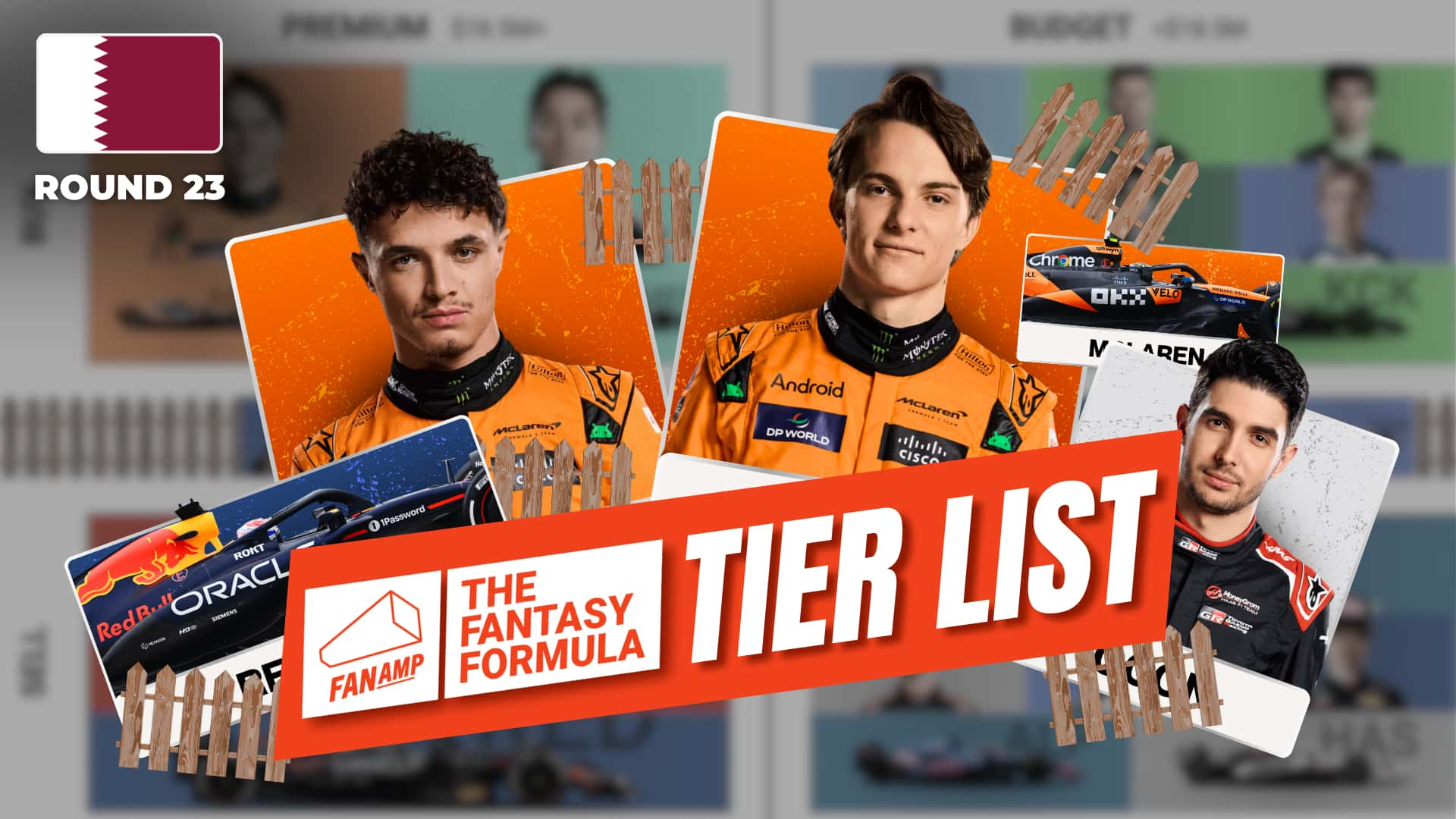
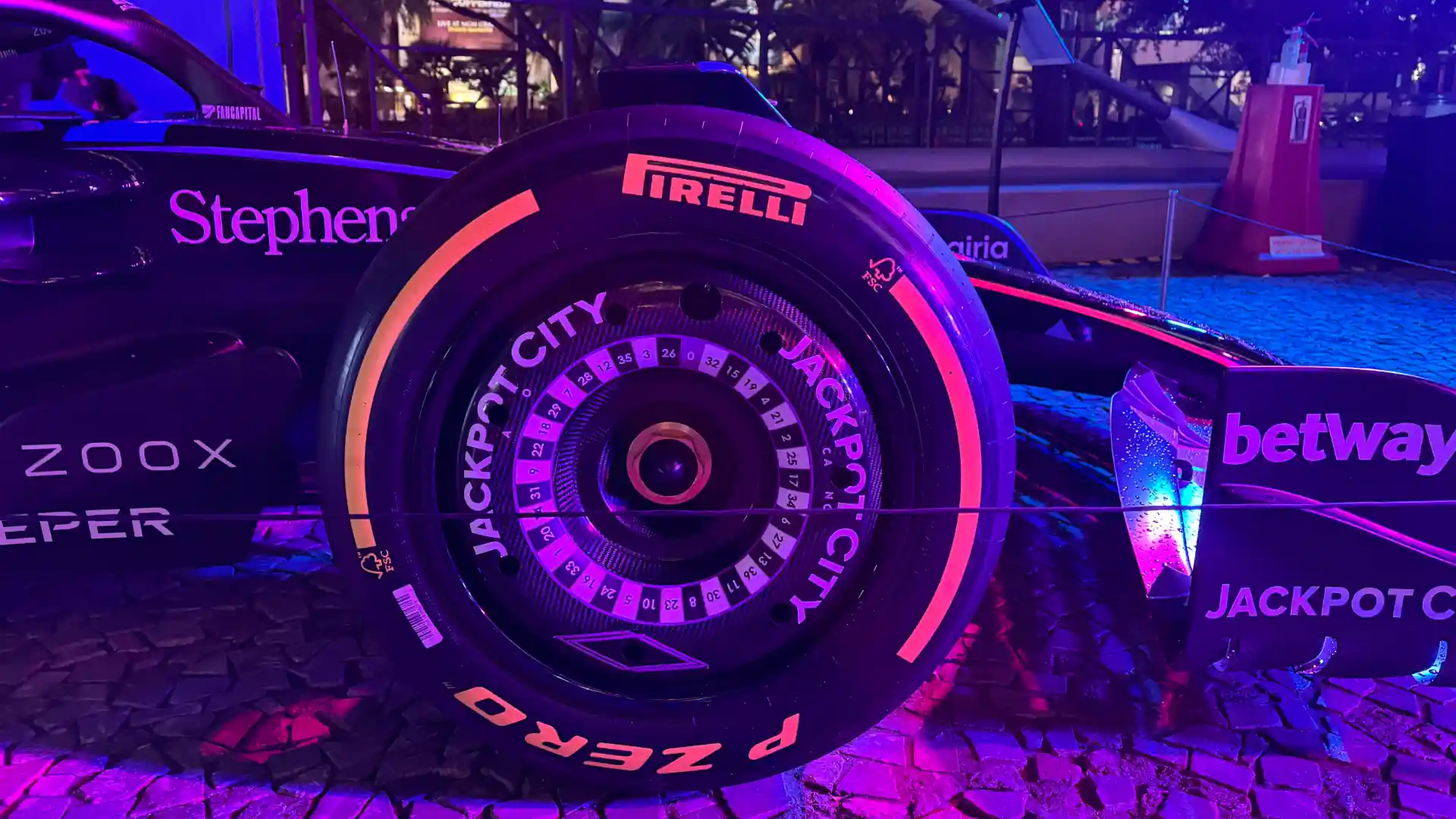
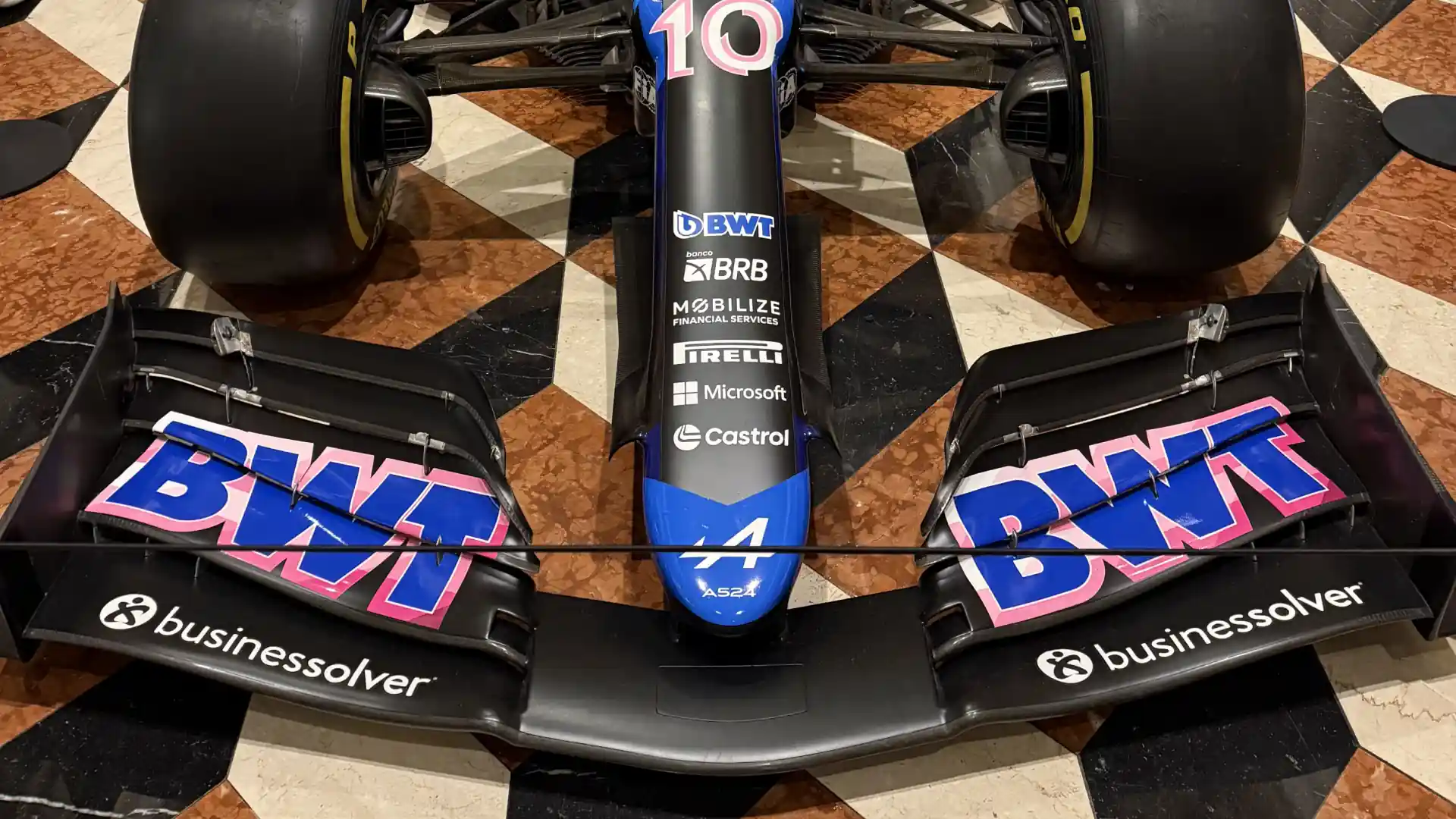

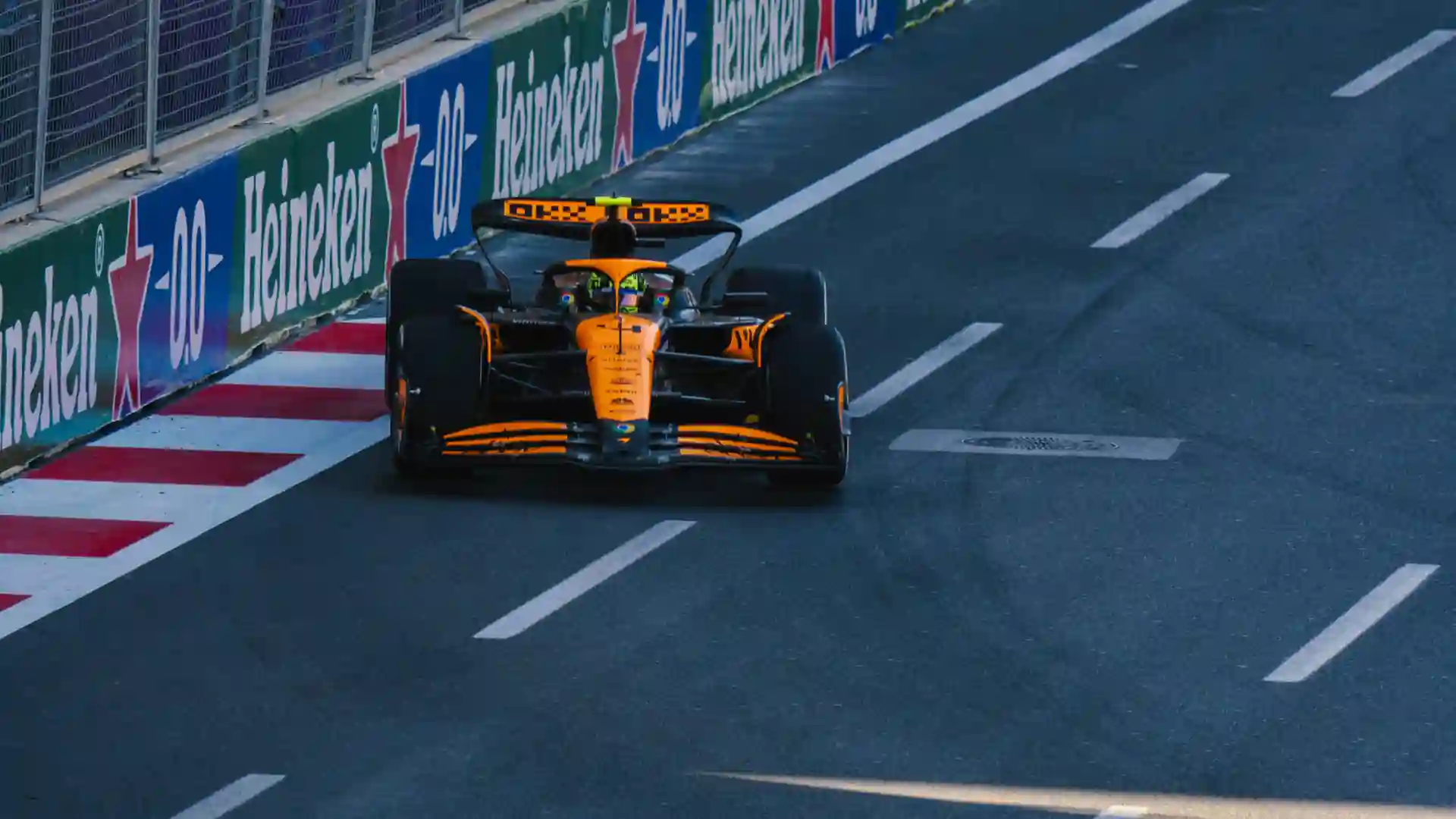


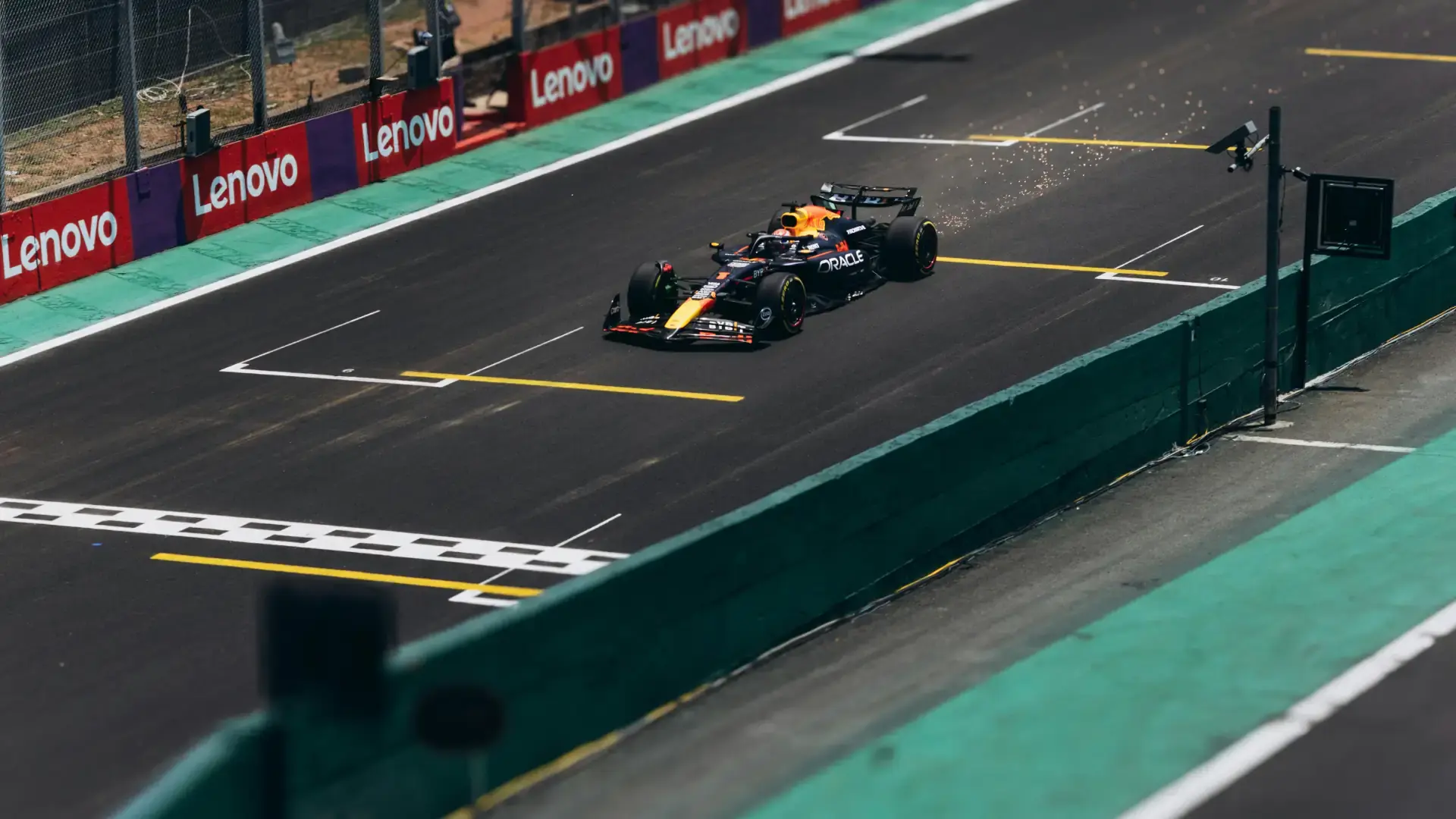







.webp)

